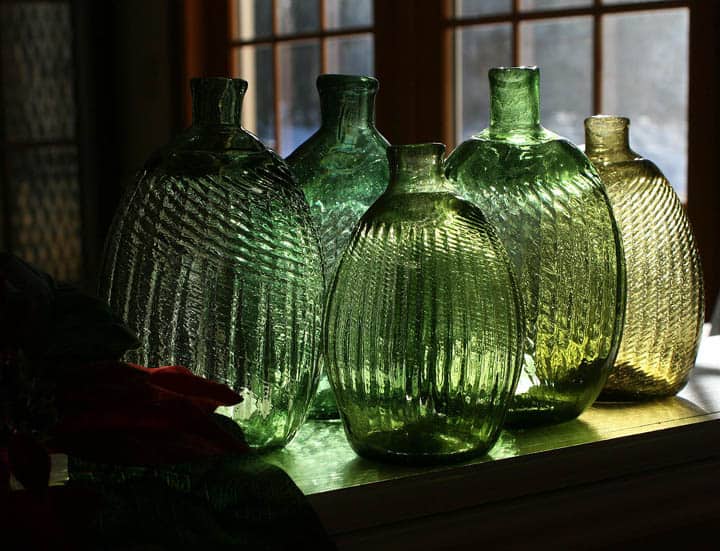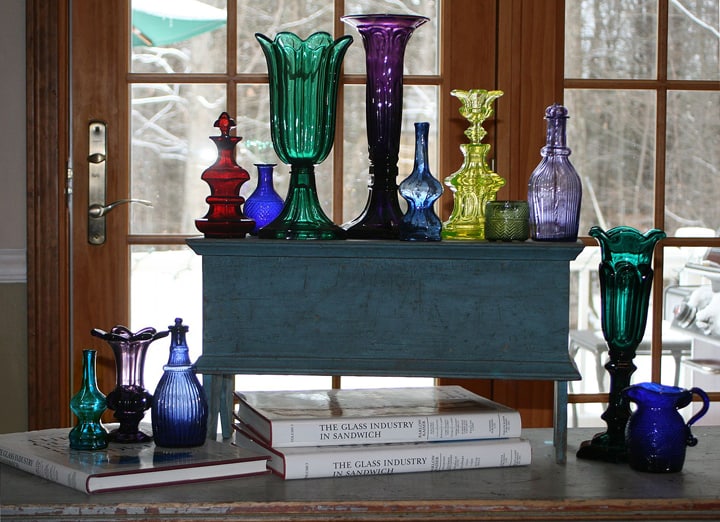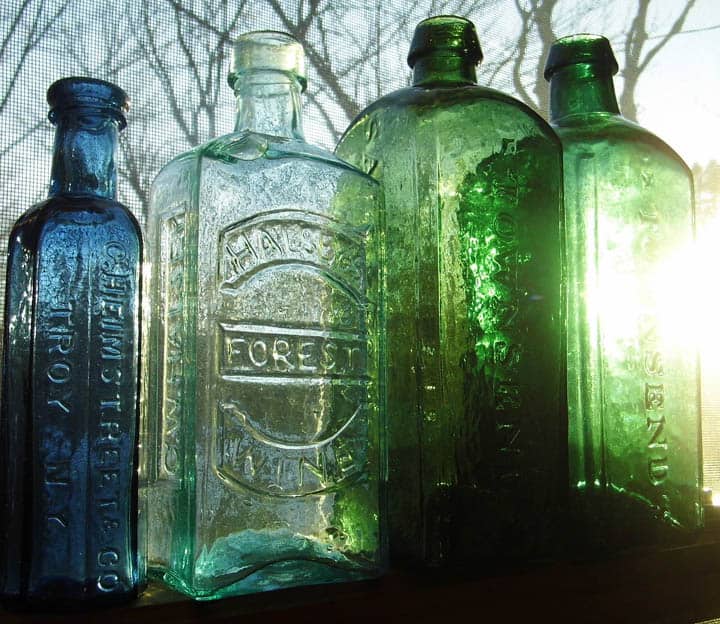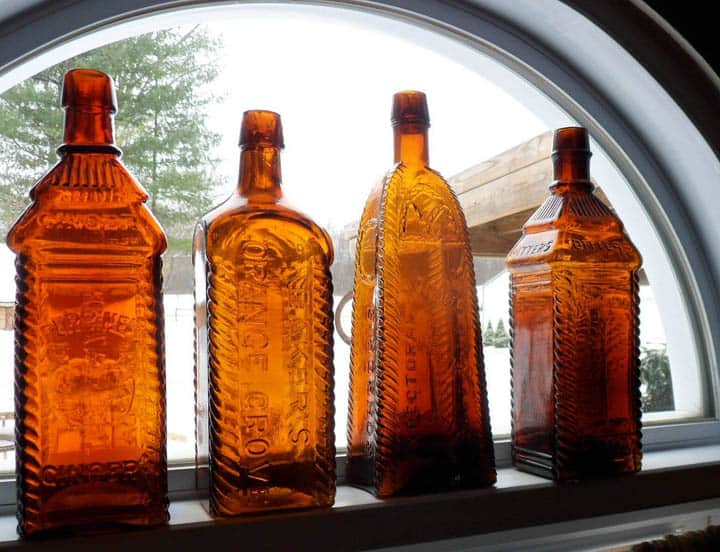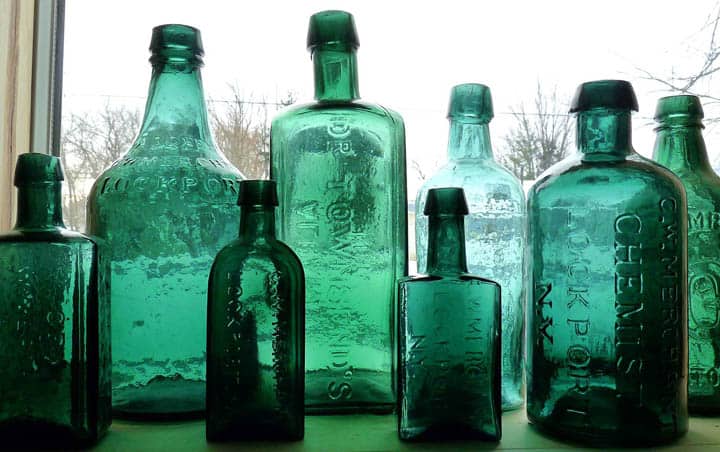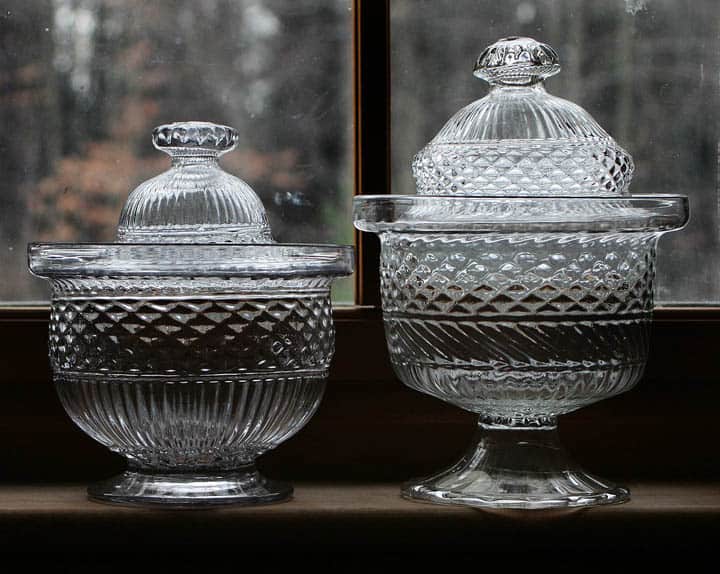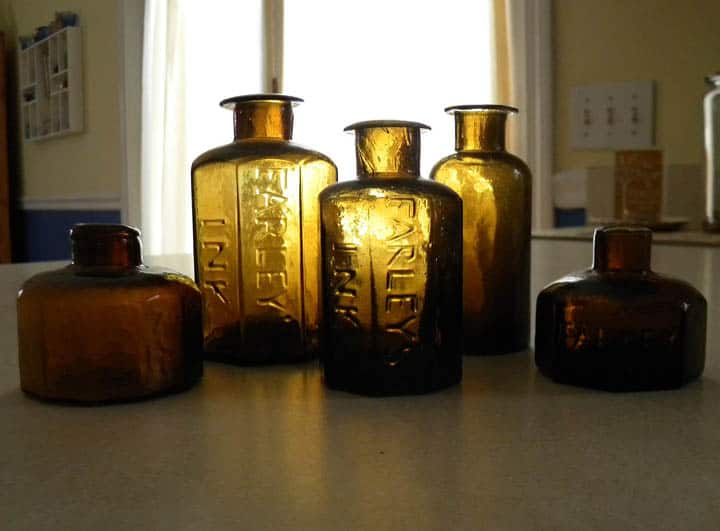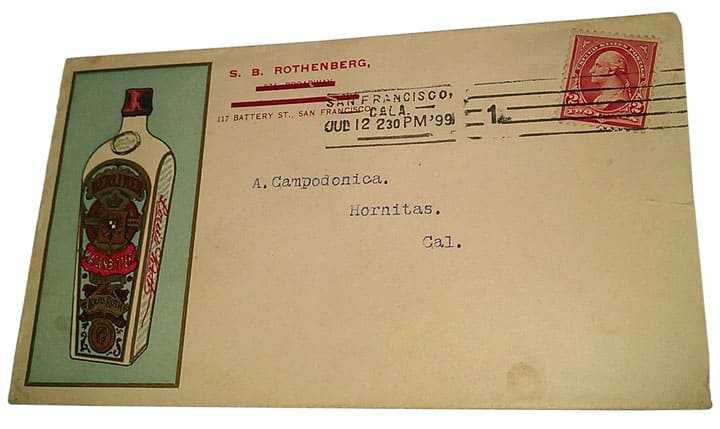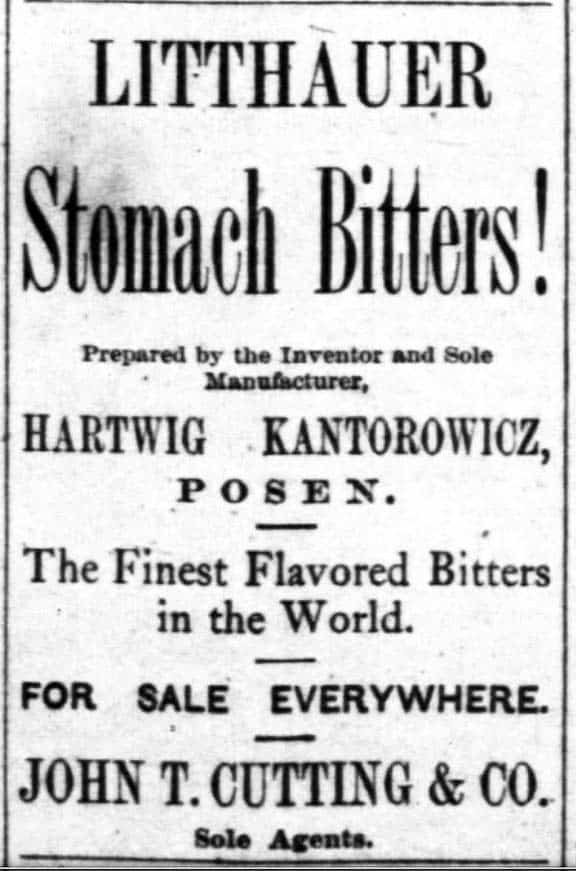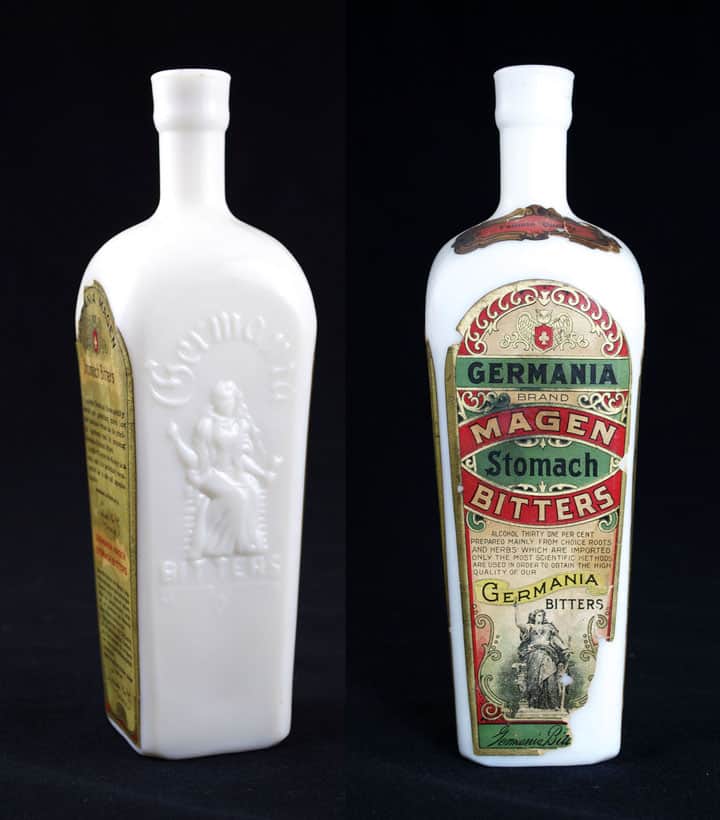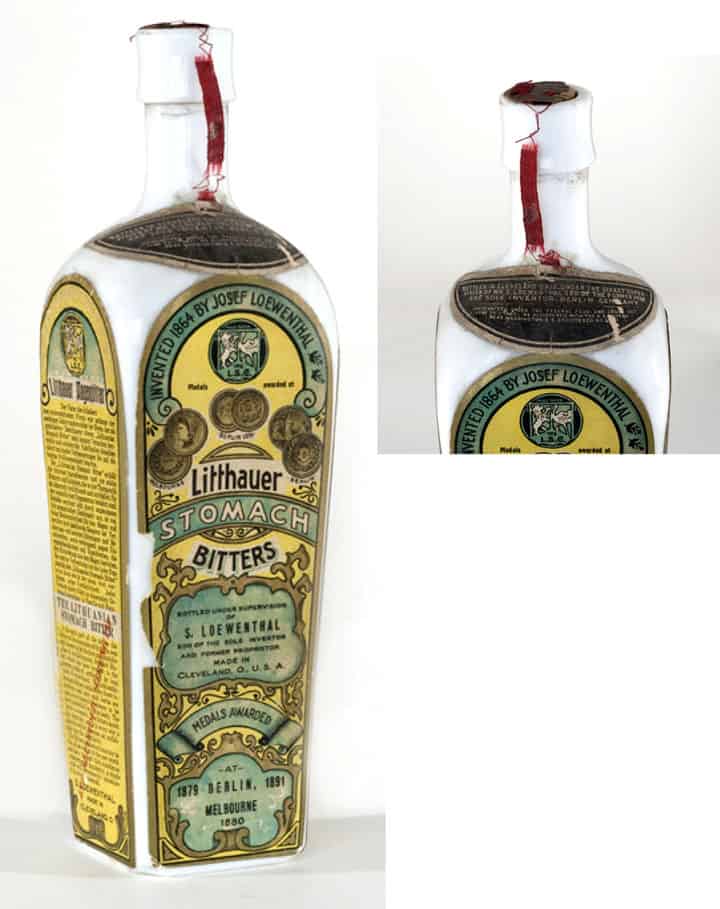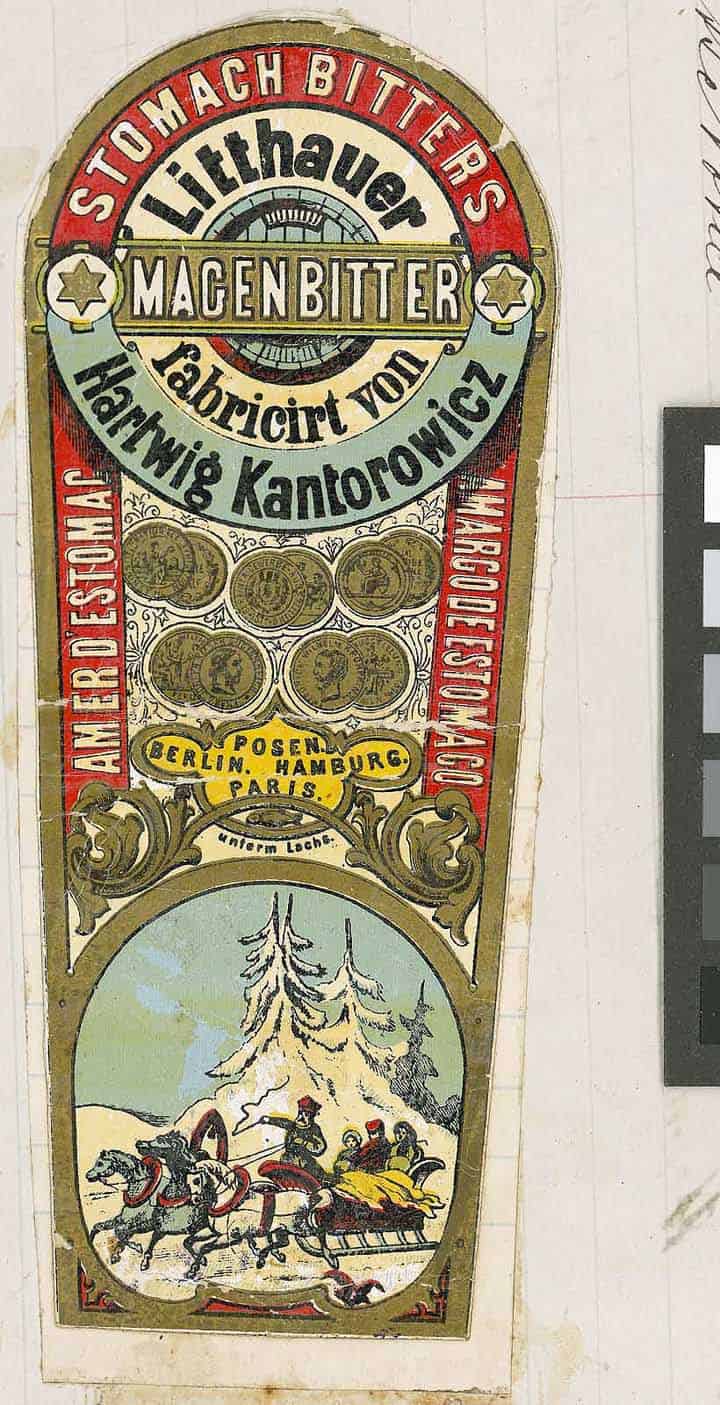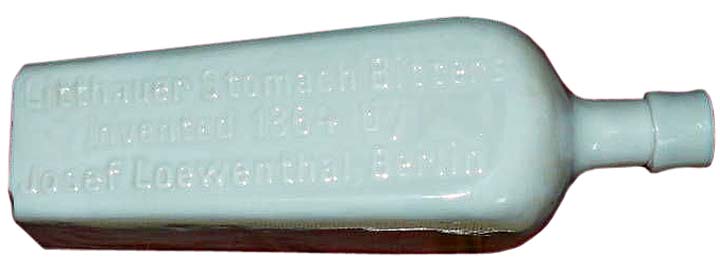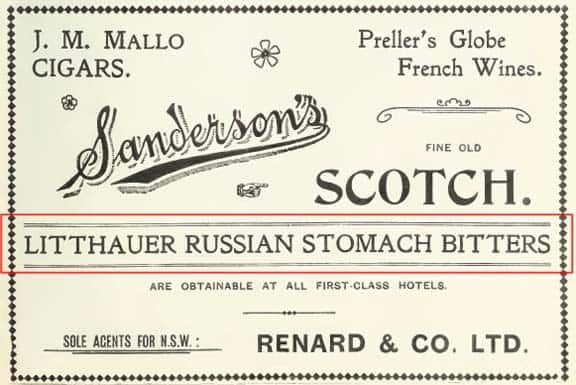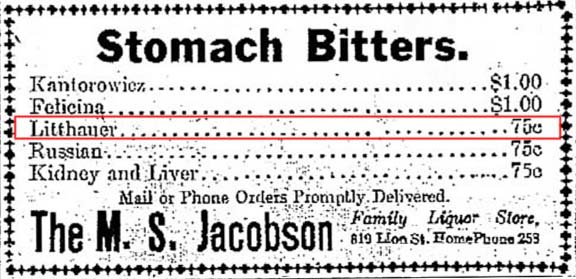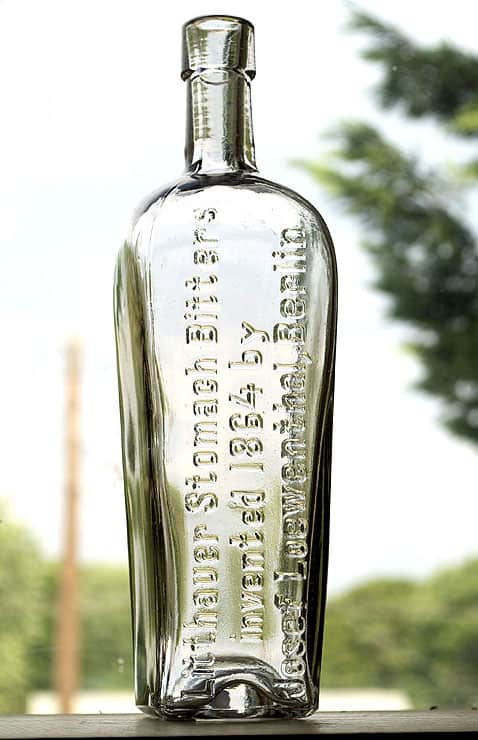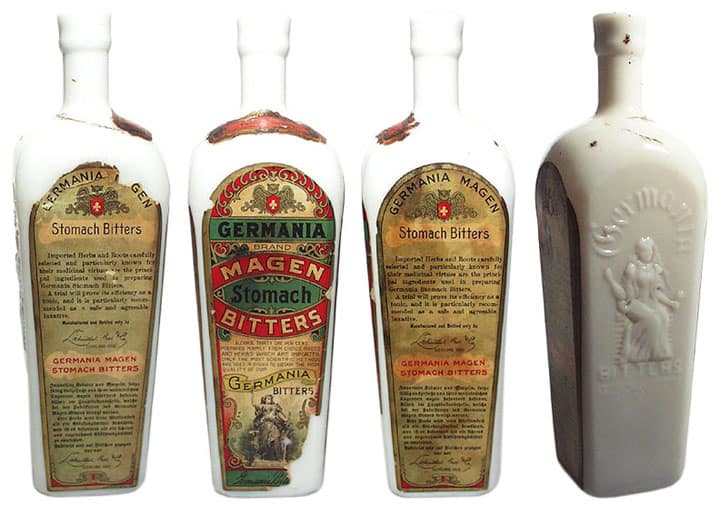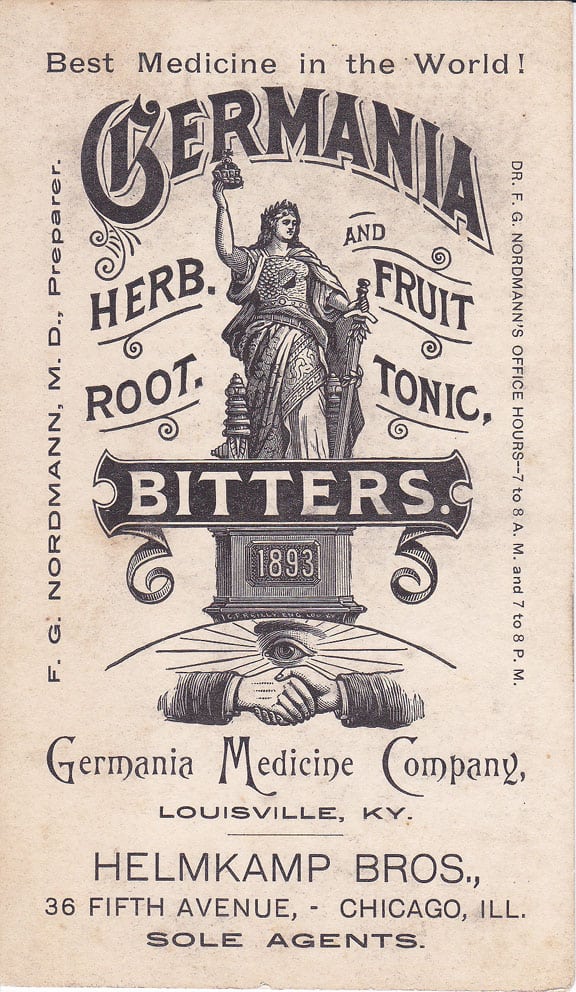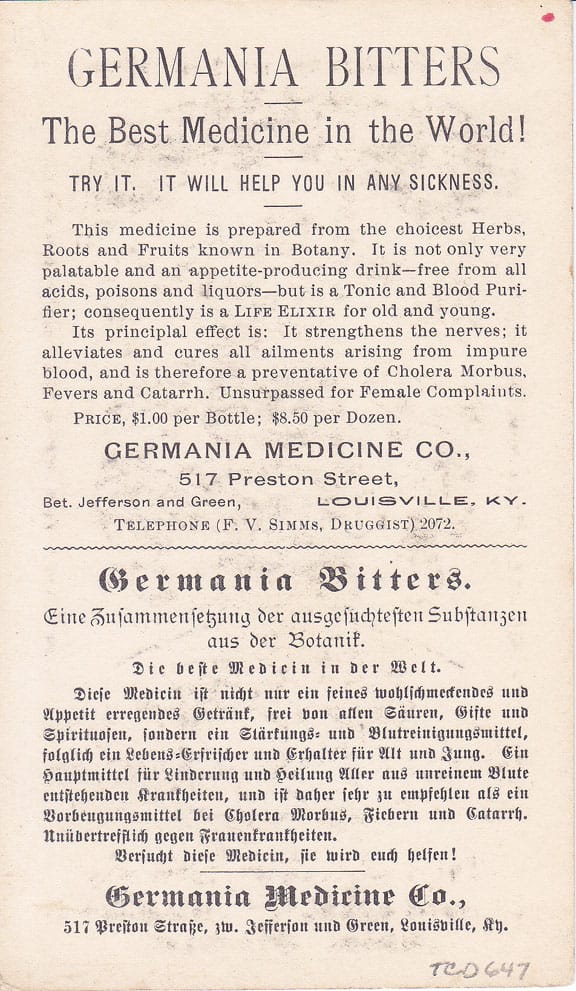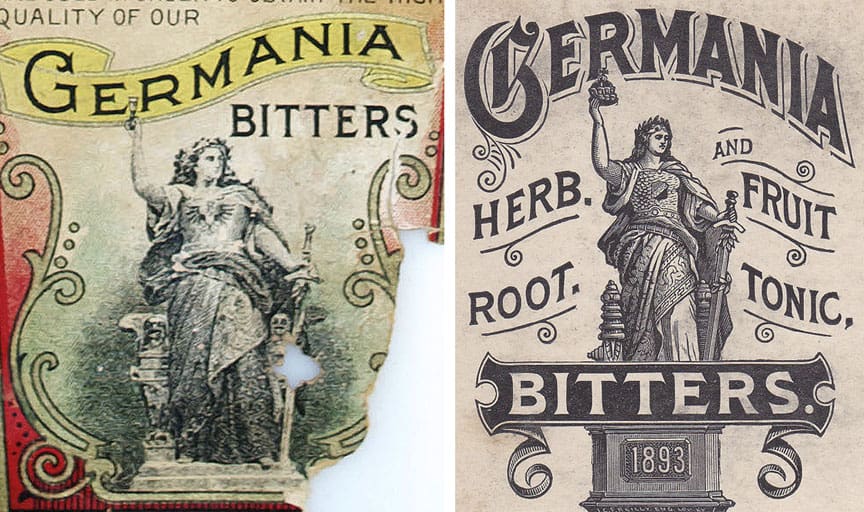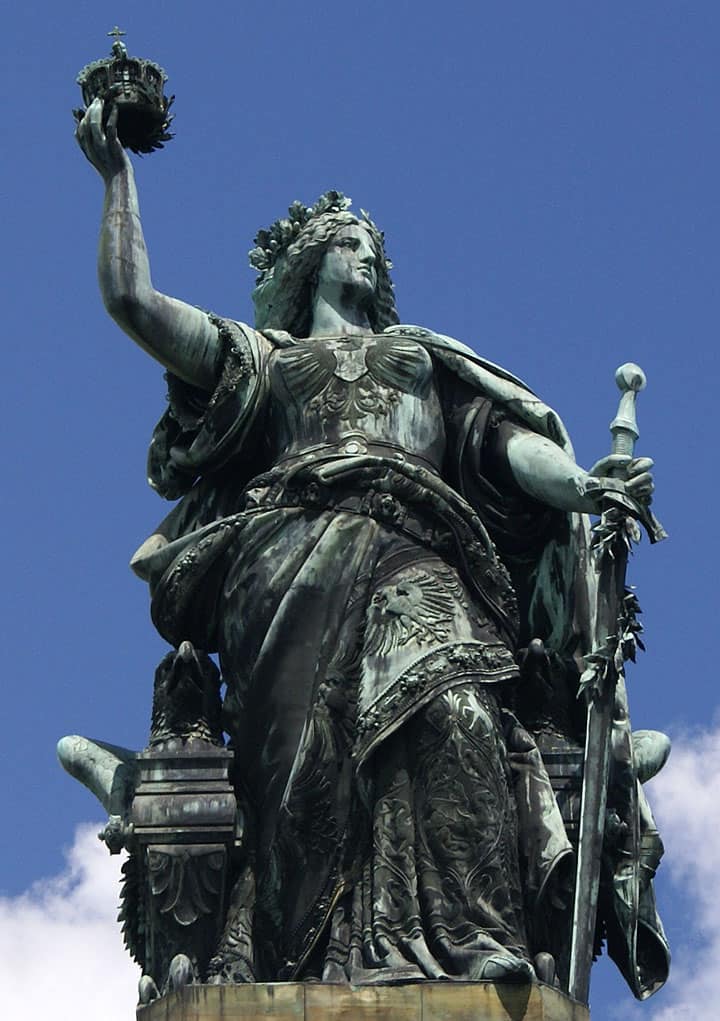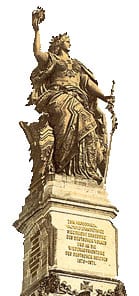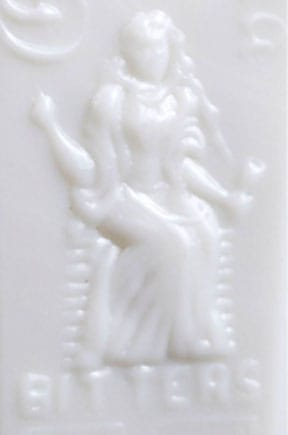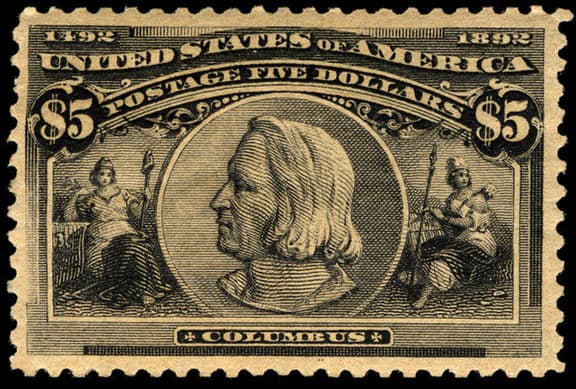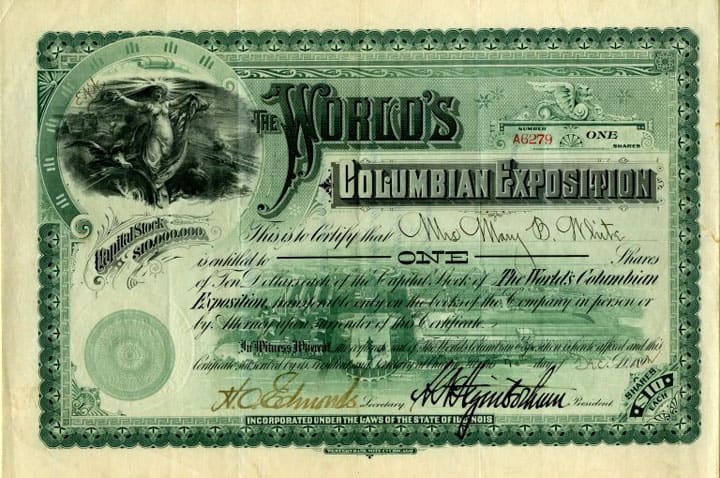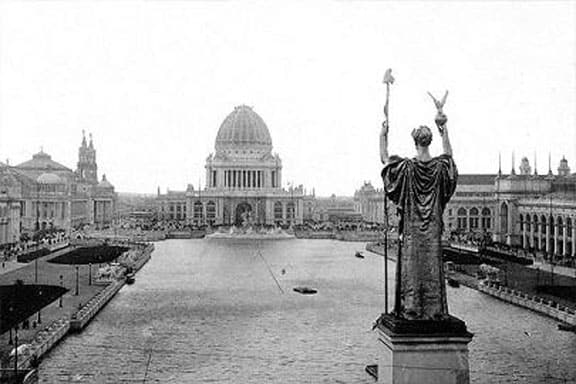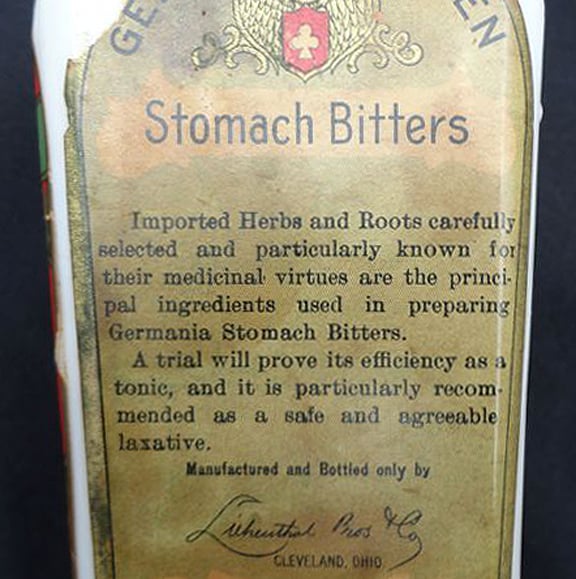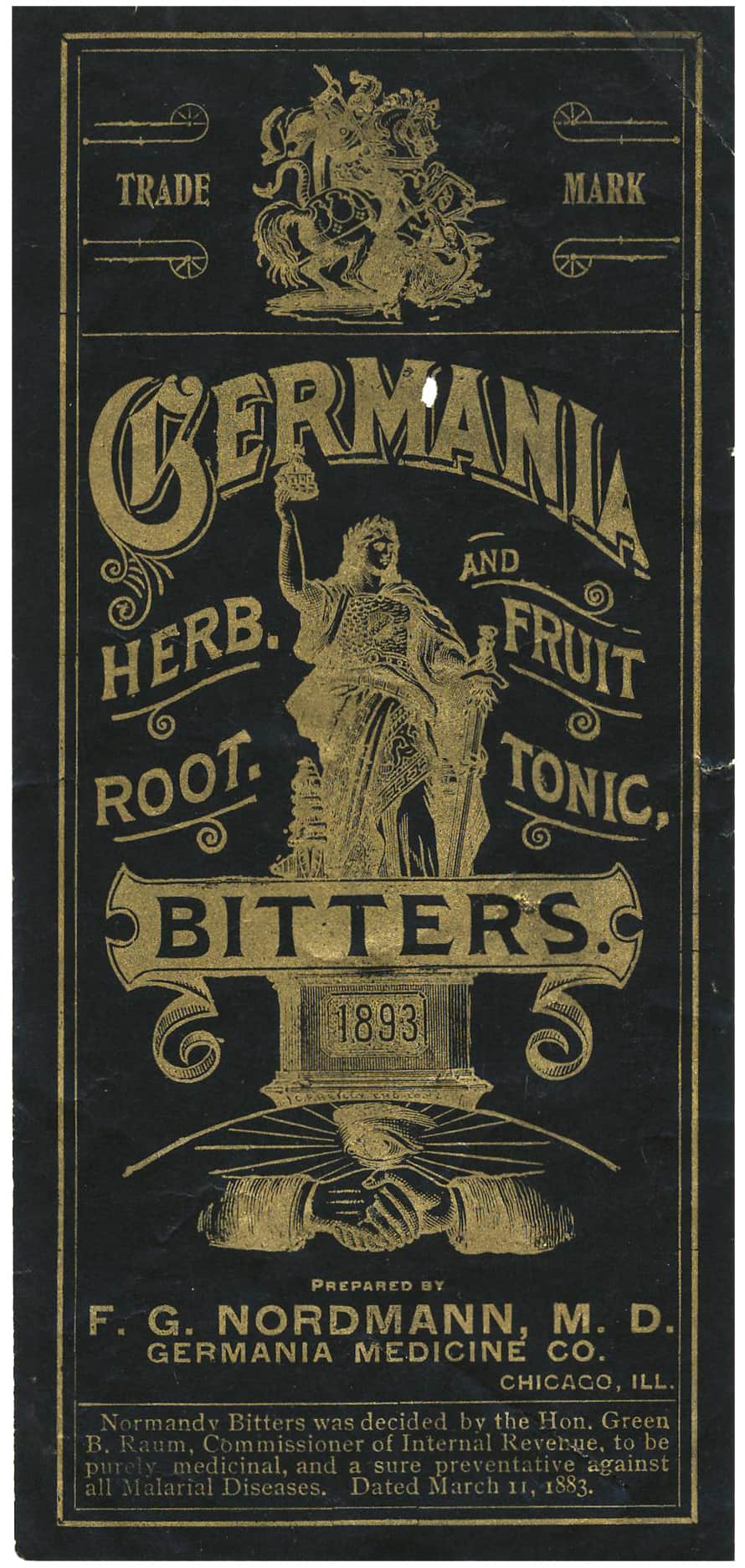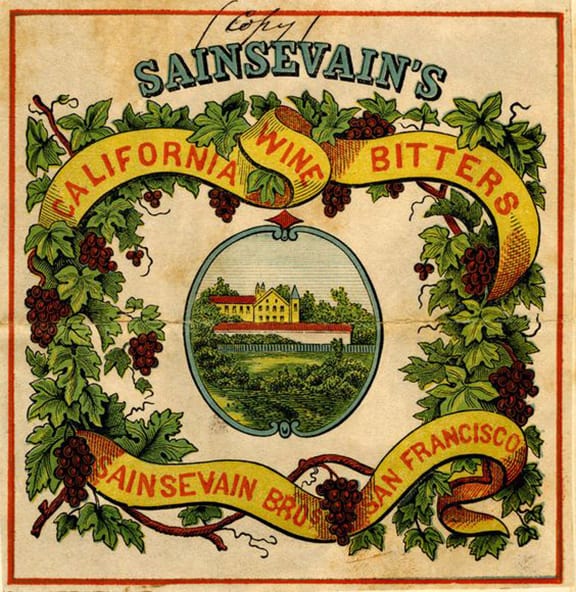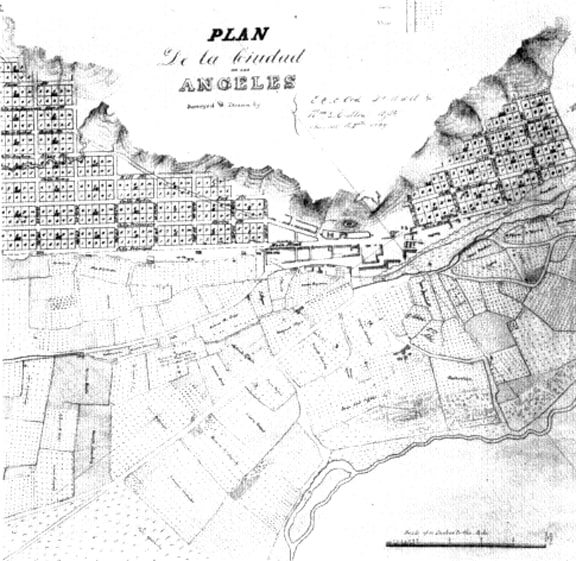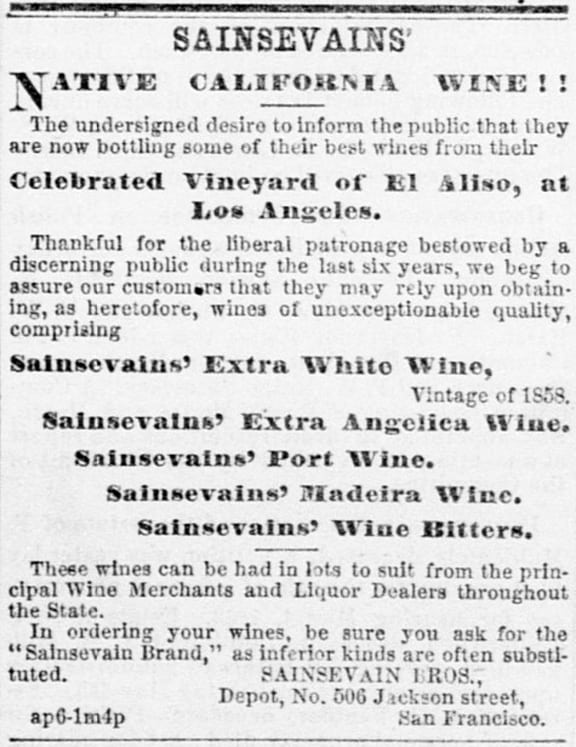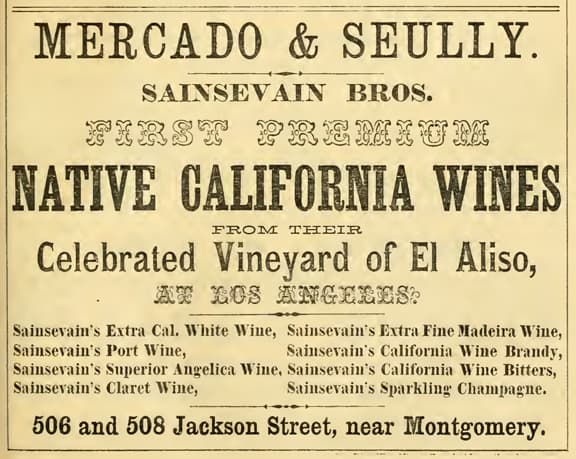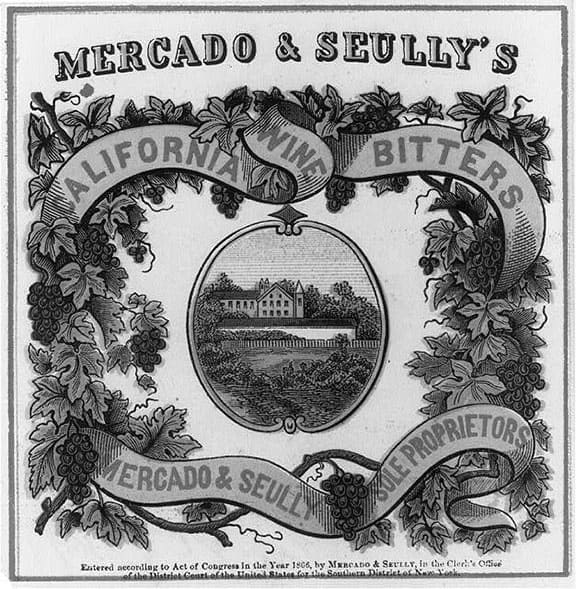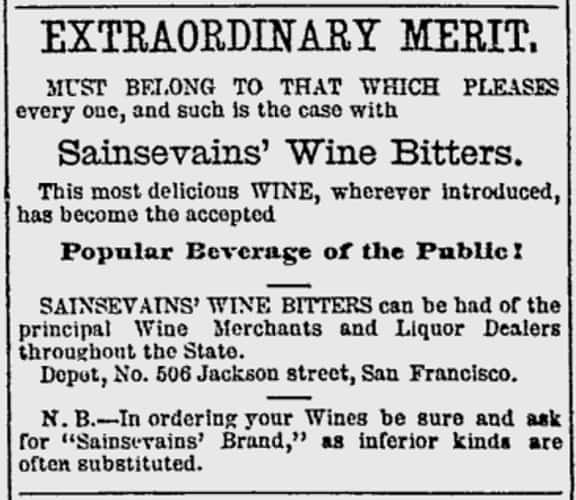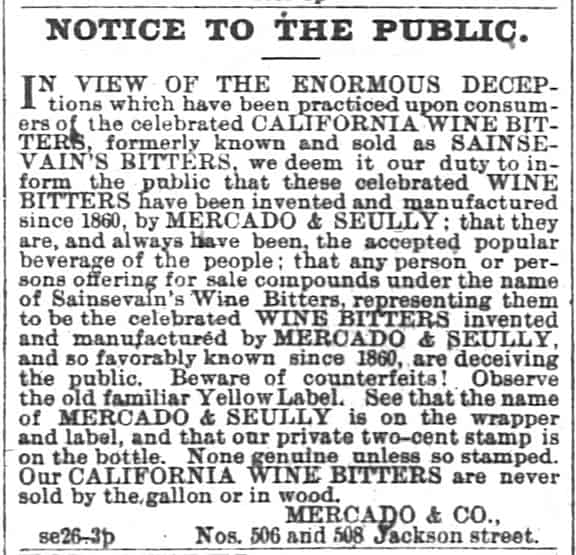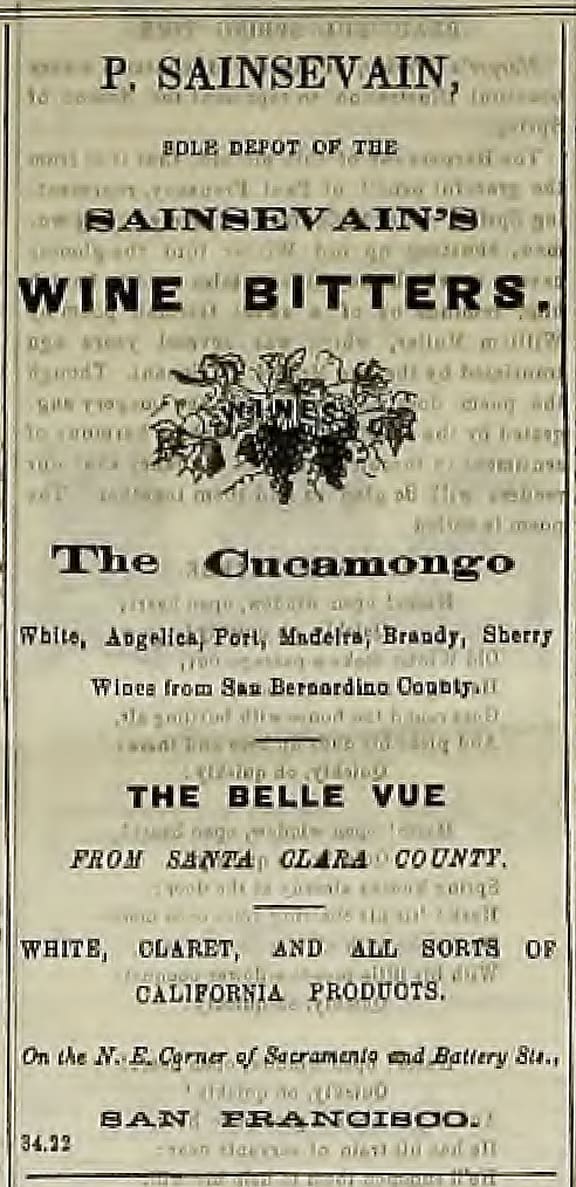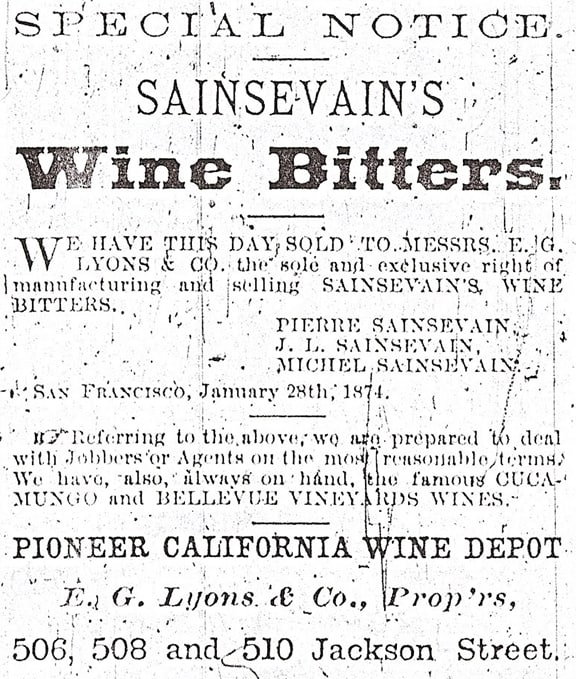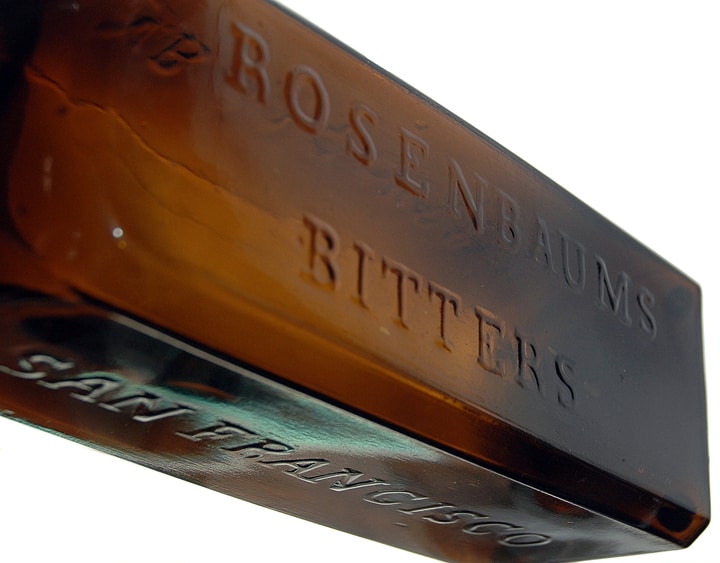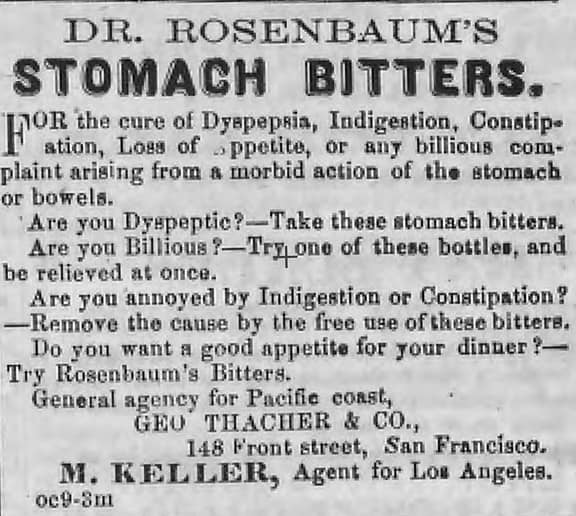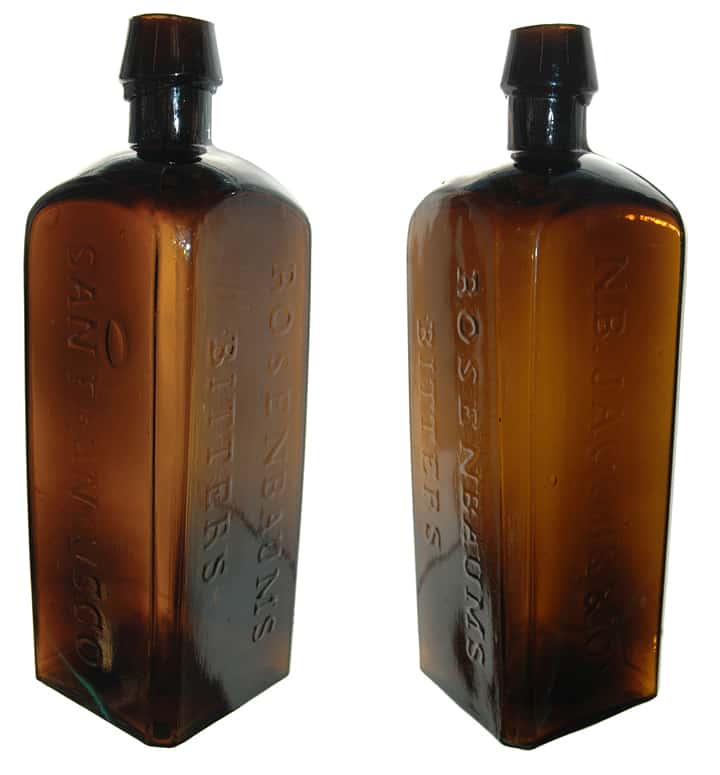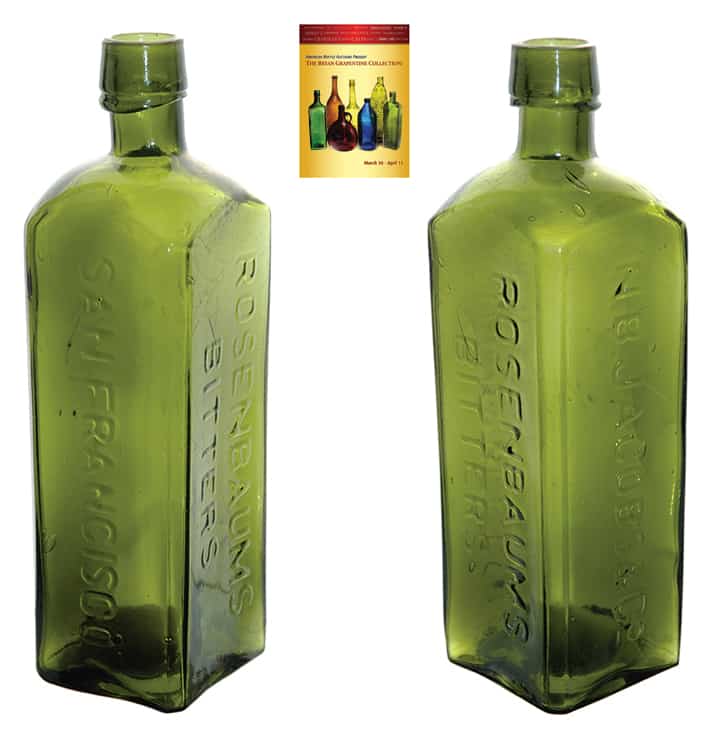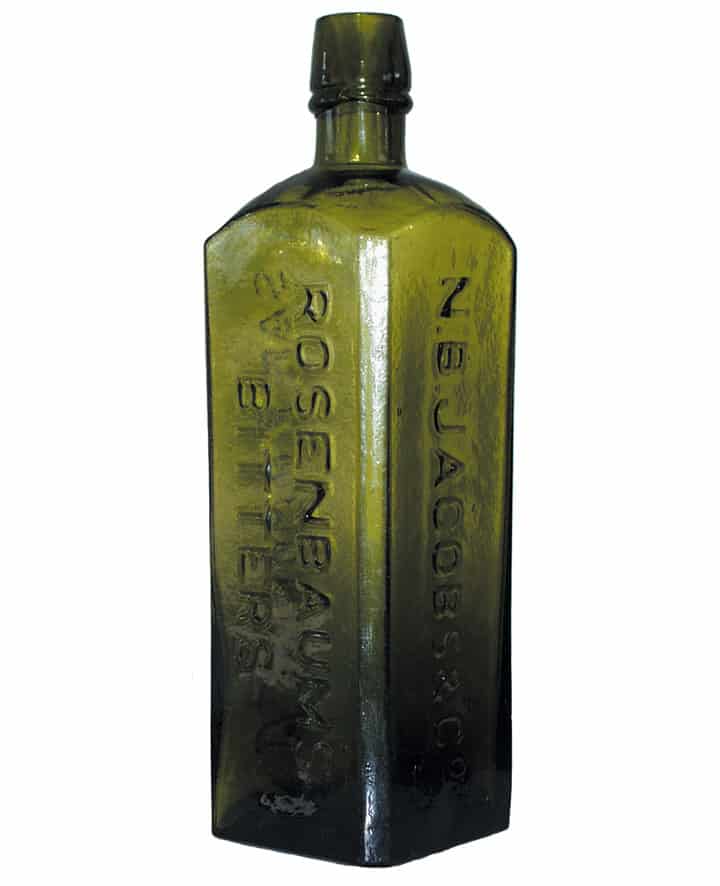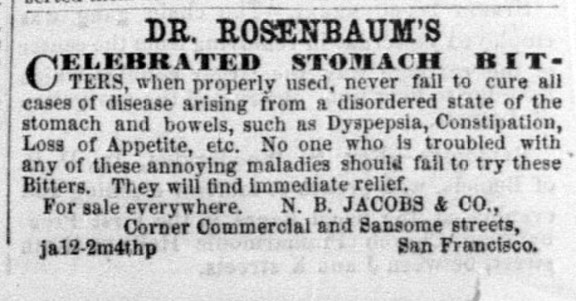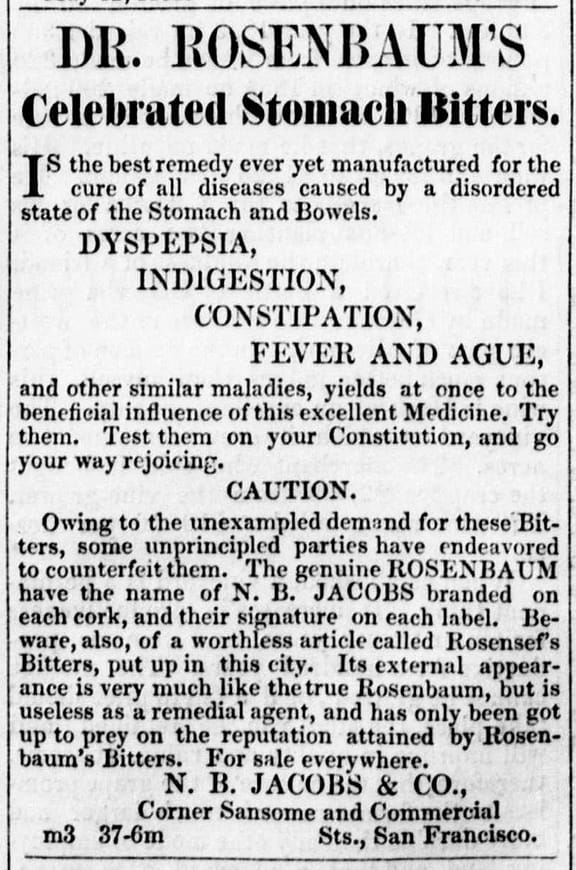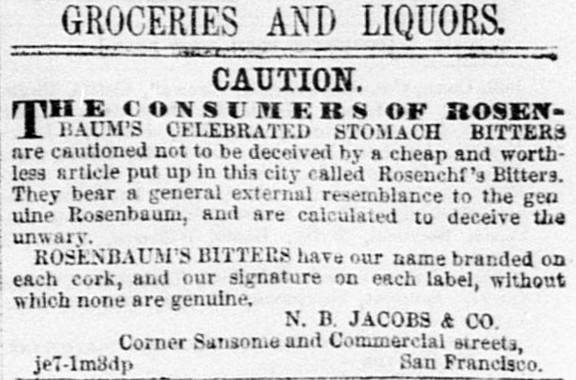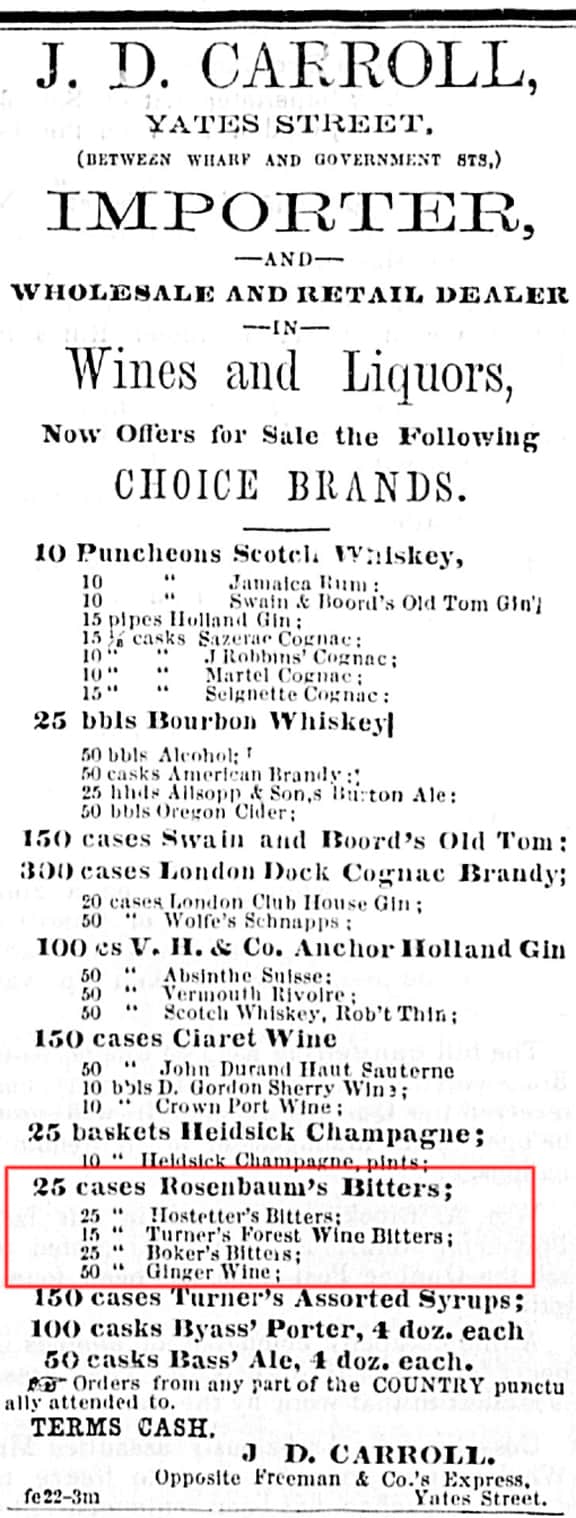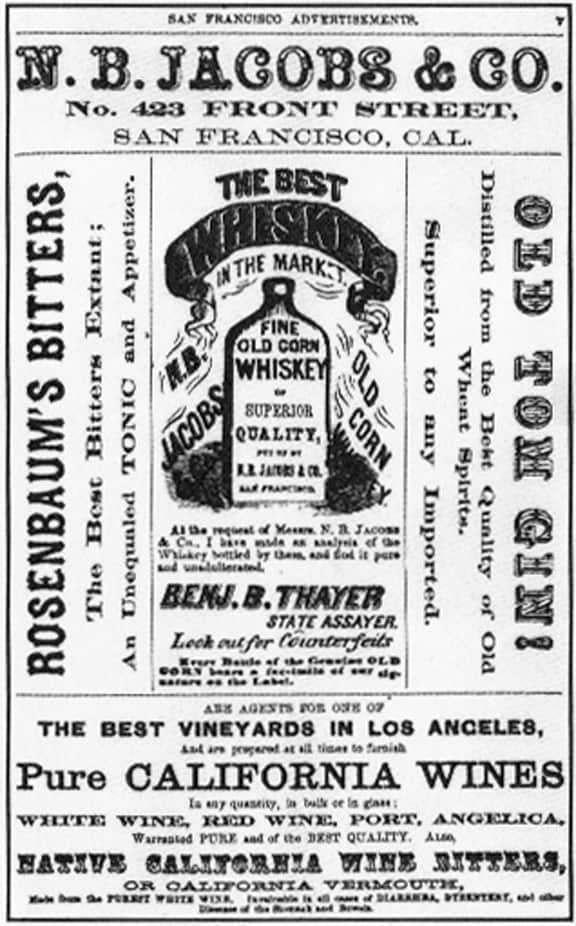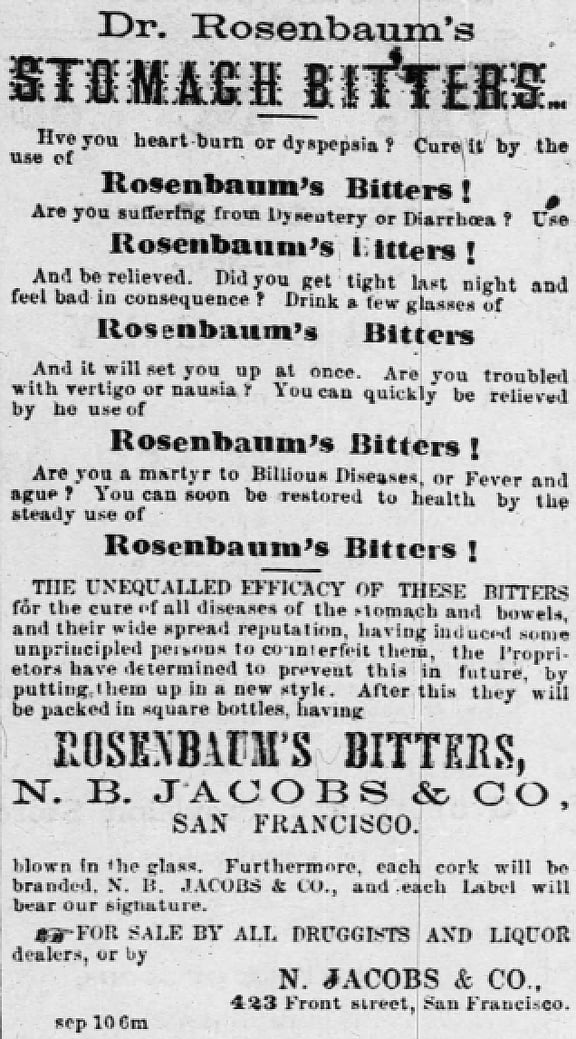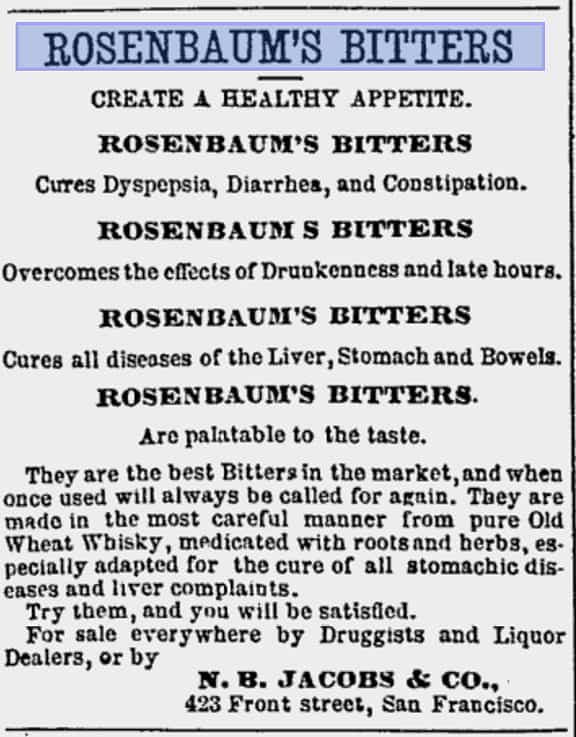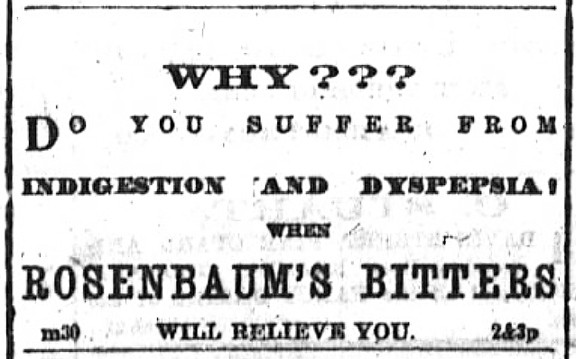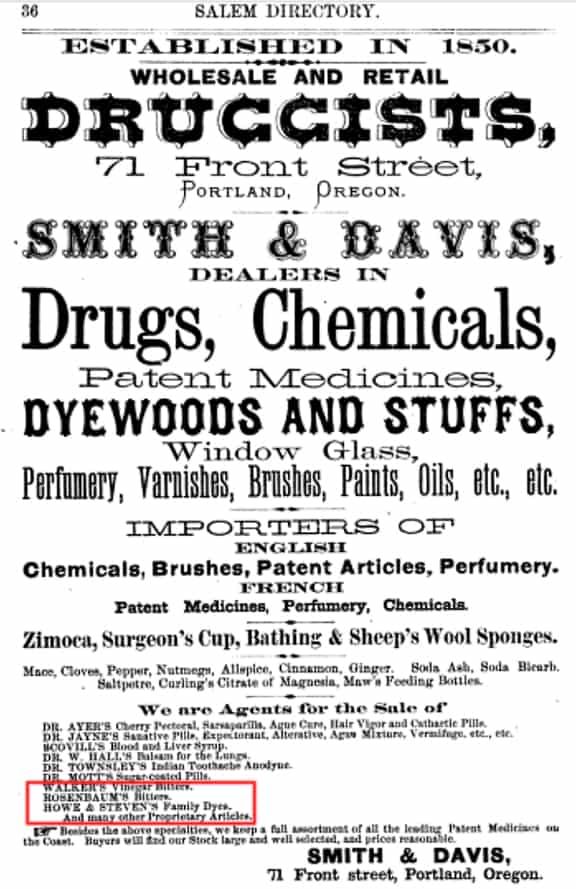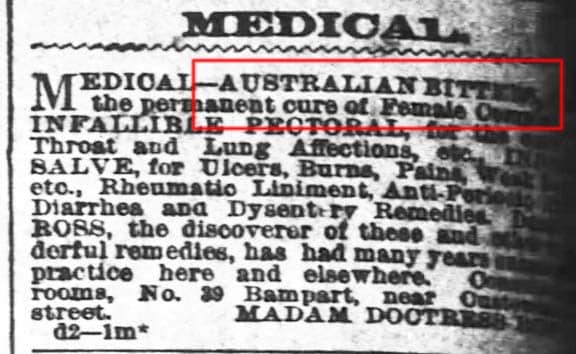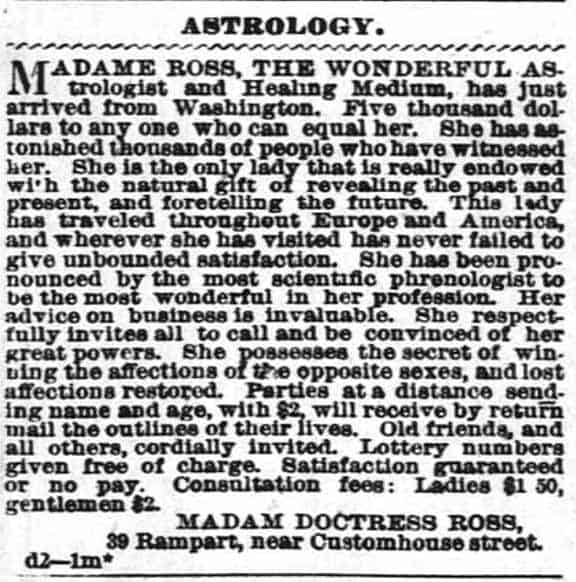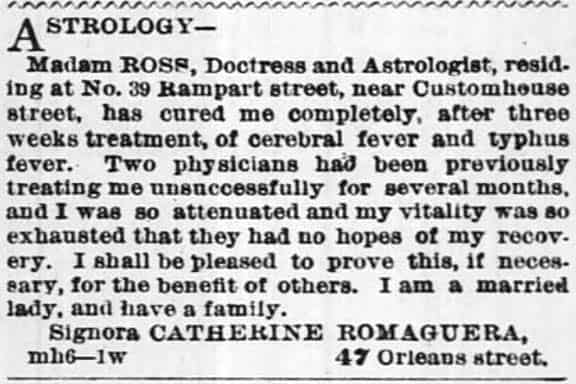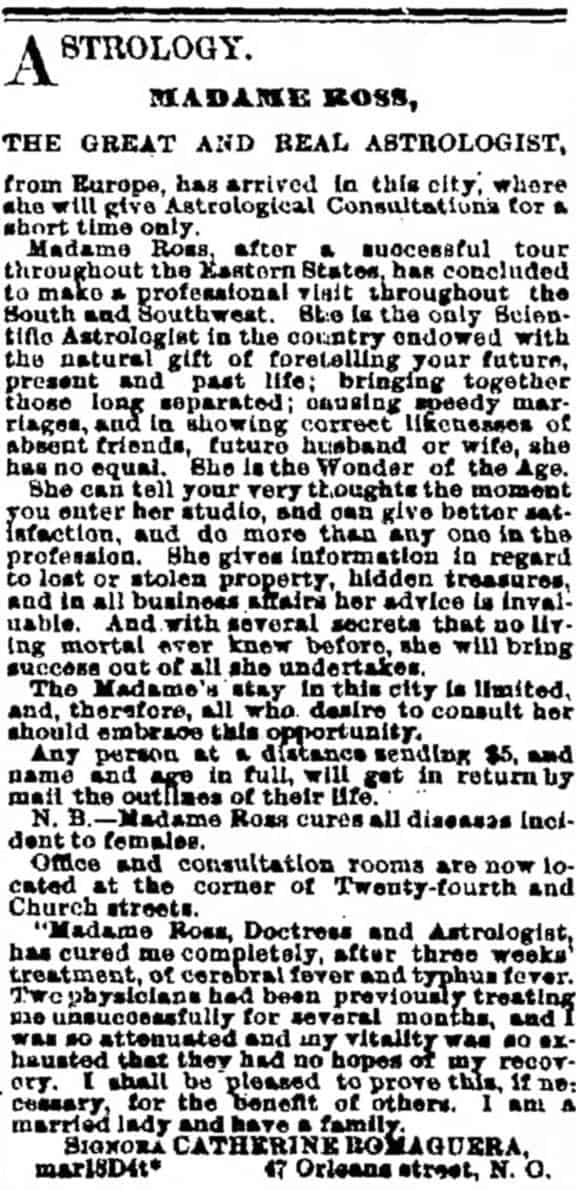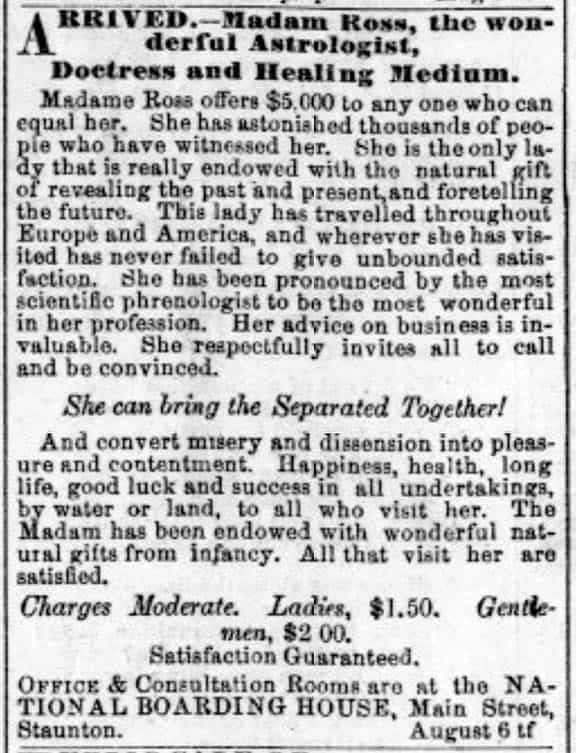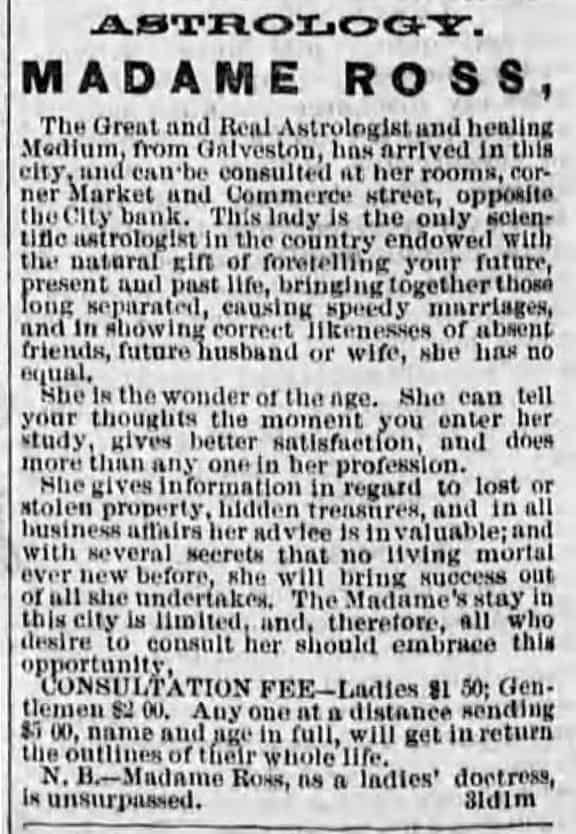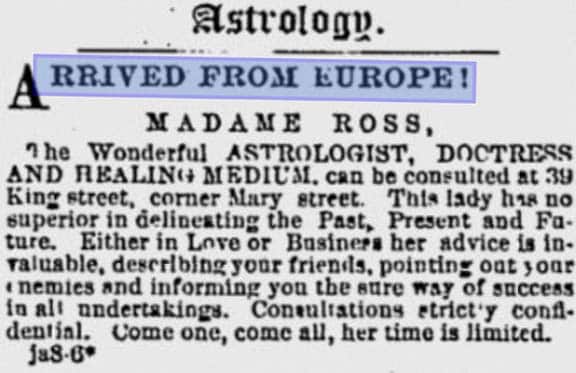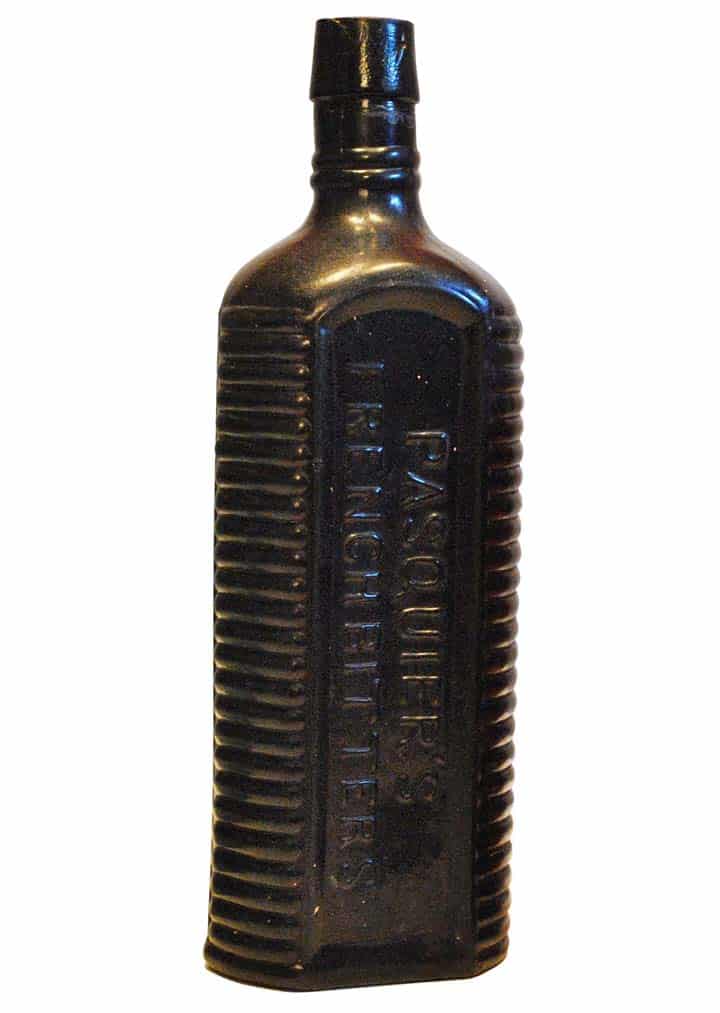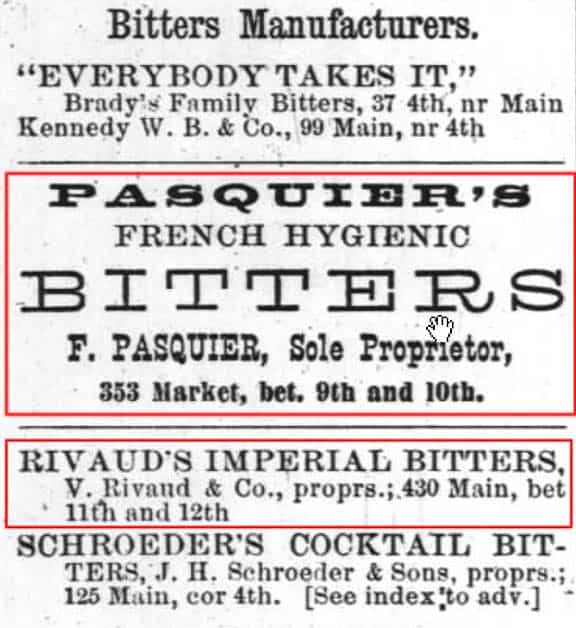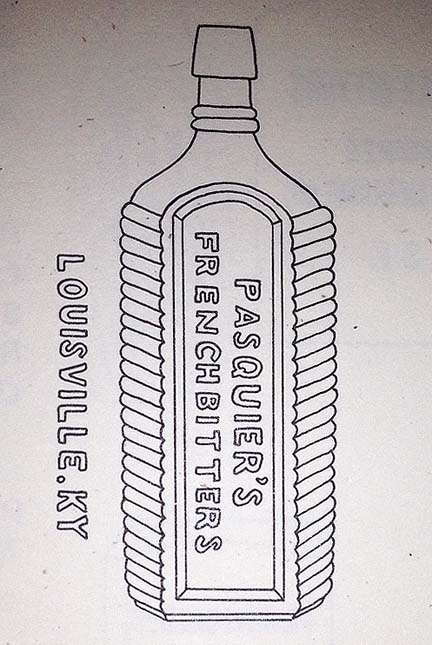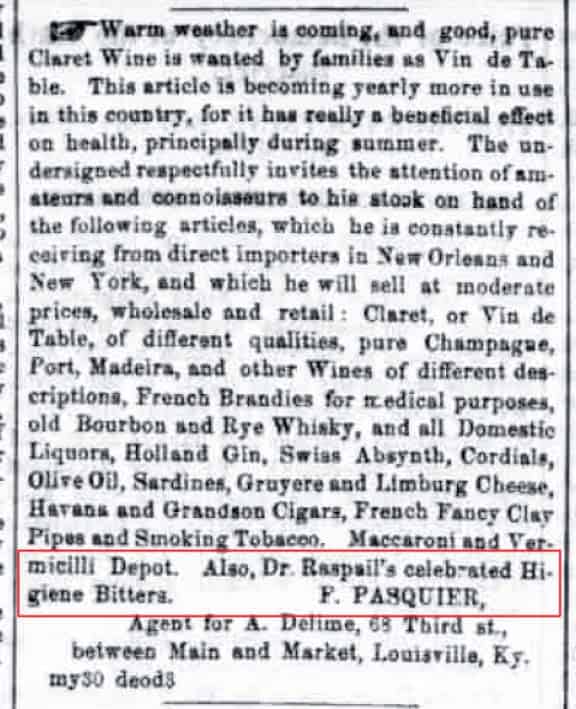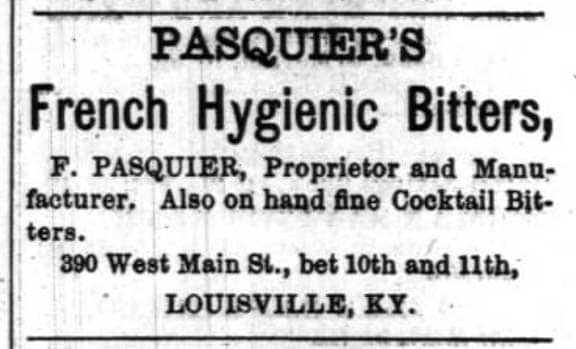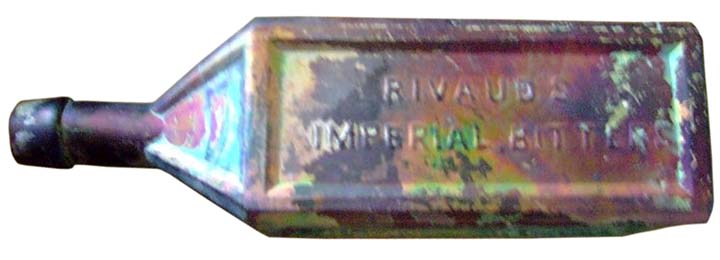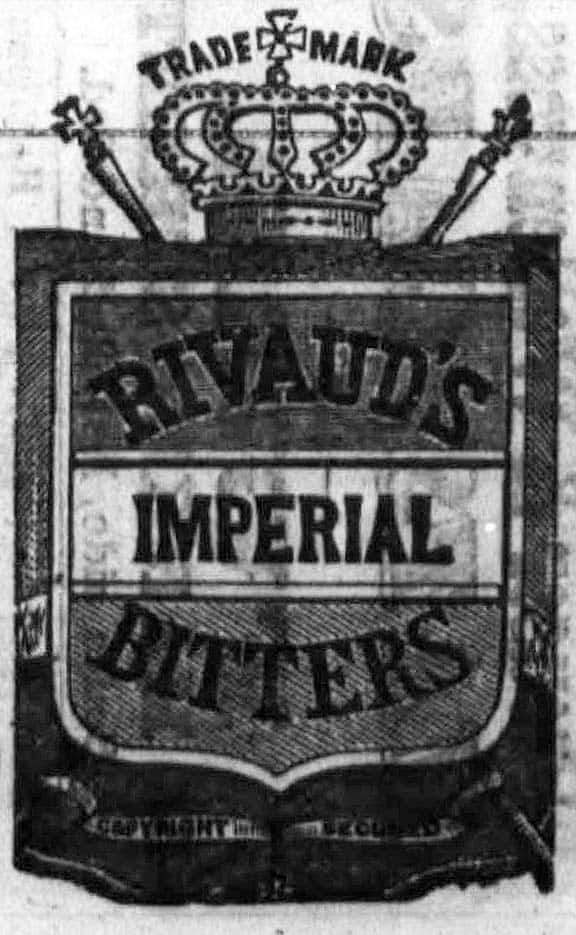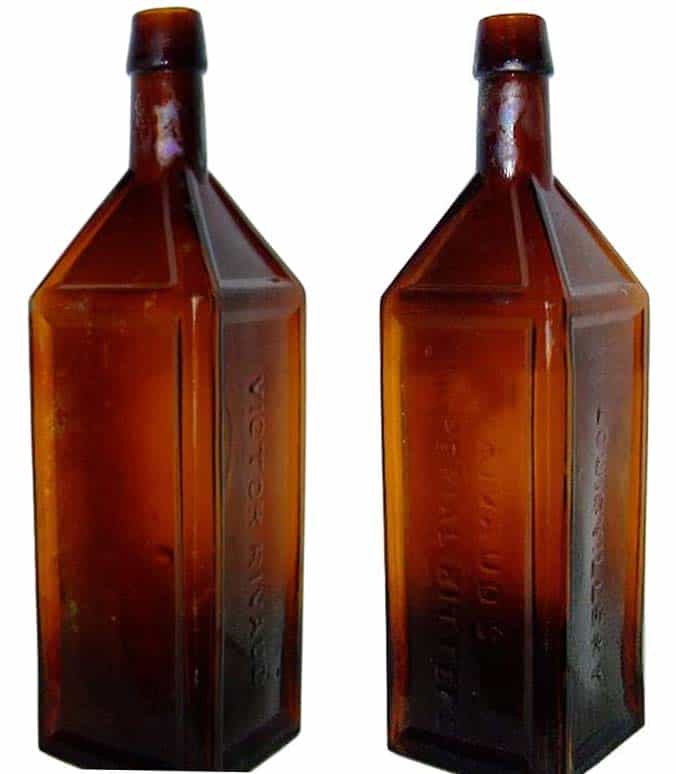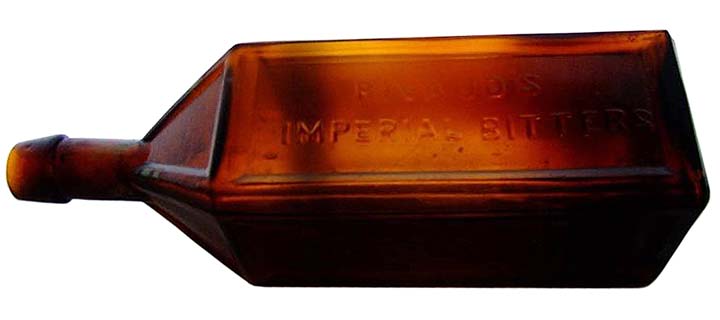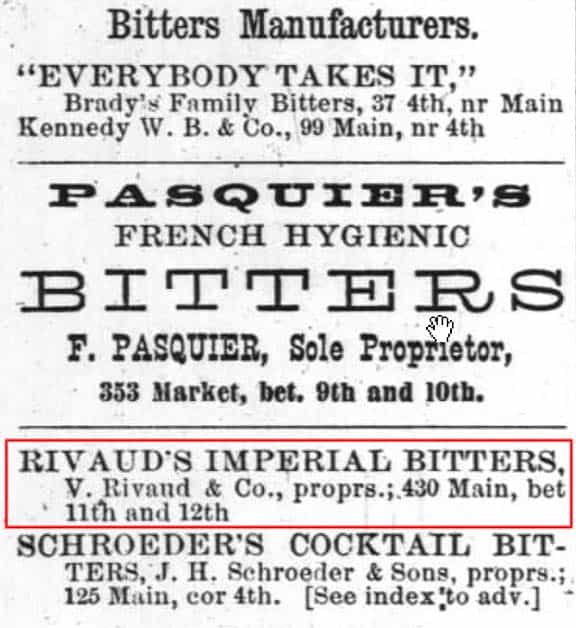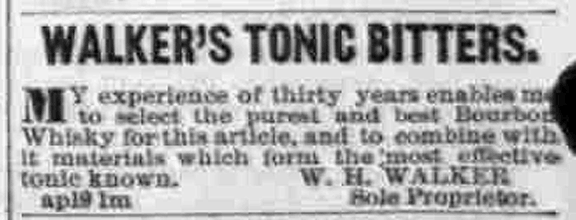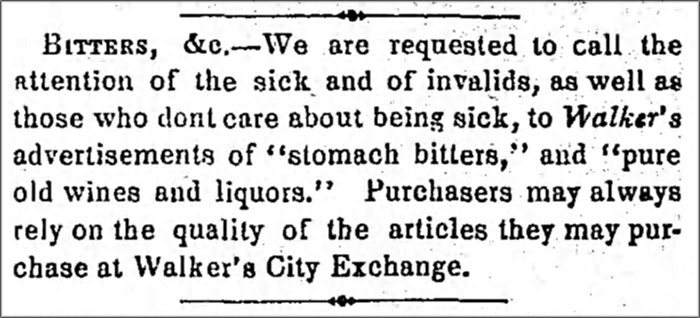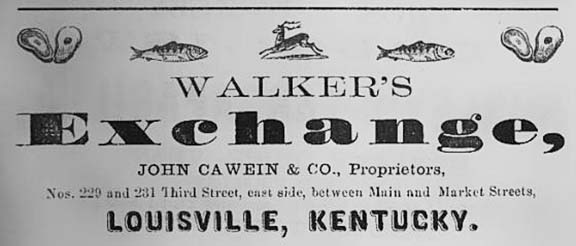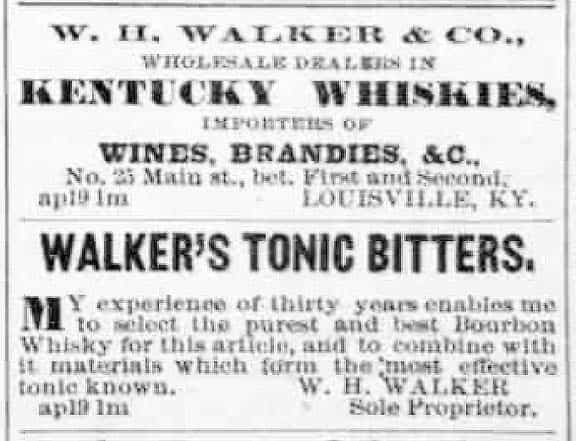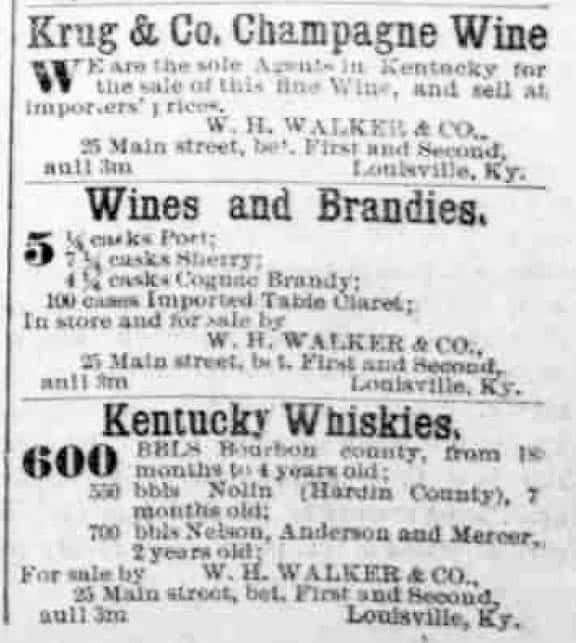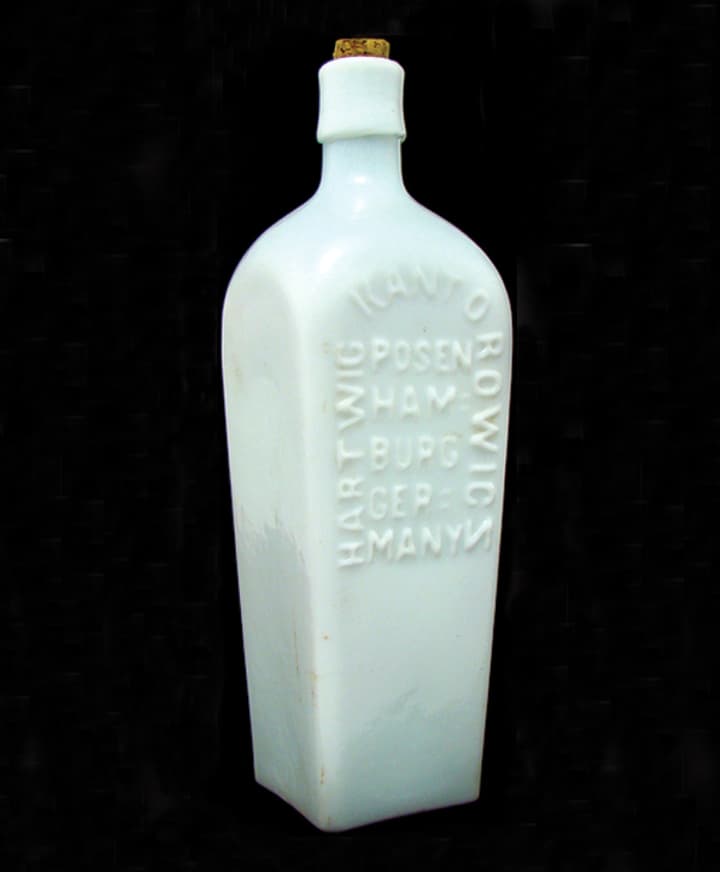
History of Kantorowicz Family and their Factory
30 December 2013 (R•010614) (R•012714-labeled sample size)
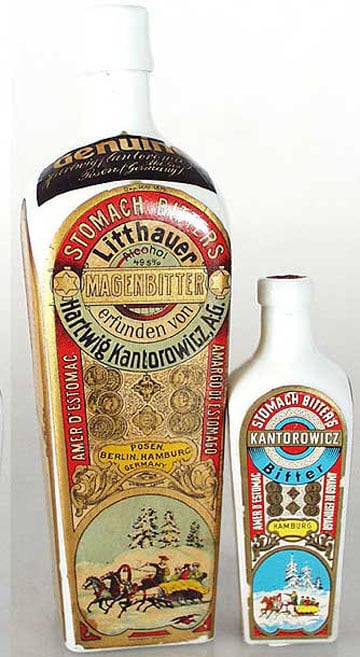
 As you may know, I started a series a few days ago on the white milk glass, case gin bitters bottles from primarily Germany and Poland. I rarely see collections of these bottles but when I do, I am really blown away and impressed with the variety and depth of the brand. In the past few years I have had the good fortune of seeing and writing about the Feldmann collection in New York (read article in the November December 2012 issue in Bottles and Extras), the Wicker collection in Indiana and the Katzen collection in Maryland. I even have a few bottles myself.
As you may know, I started a series a few days ago on the white milk glass, case gin bitters bottles from primarily Germany and Poland. I rarely see collections of these bottles but when I do, I am really blown away and impressed with the variety and depth of the brand. In the past few years I have had the good fortune of seeing and writing about the Feldmann collection in New York (read article in the November December 2012 issue in Bottles and Extras), the Wicker collection in Indiana and the Katzen collection in Maryland. I even have a few bottles myself.
Today I wanted to focus on the ‘granddaddy’ of all milk glass names, that being Hartwig Kantorowicz from Poznan, Poland. Searching online, I came across the History of Kantorowicz family and their factory by Stanisław Nawrocki. This is it folks, a wonderful overview of an important name in bitters bottle collecting. I have taken the liberty to add representative imagery where appropriate.
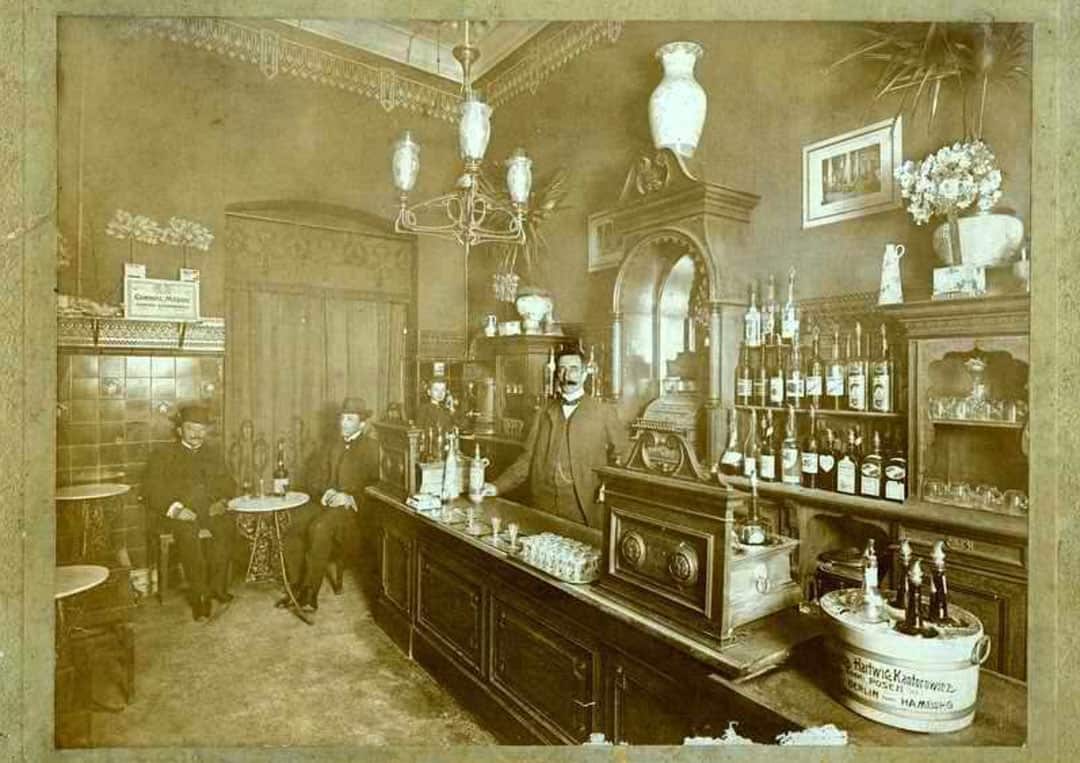
History of Kantorowicz Family and their Factory
by Stanisław Nawrocki
From the Chronicle of the City of Poznan No. 4 / 1996

The Kantorowicz Family is very popular in Poznan, especially among the older generation. Kantorowicz’s had in fact a factory (pictured above) producing great liqueurs, spirits and fruit juices, famous in Poland and in Europe and also very well known in the world. They are not known for their scientific activities, or because of the fact that one of the family members was the world-renowned medievalist. In the nineteenth and early twentieth century in Poznan lived few hundreds of Kantorowicz families, all of Jewish origin. According to the register of residents, there were about 55 families, but besides that, there were about 40 single-parent families (eg, widows with children) and single persons with this name. Prussian officials, who made a record of the city population, did not comply with the rules, leaving some important sections undone, especially regarding the parents. This causes major difficulties when trying to link families in clans.
Difficulties also occurred while reconstructing the family roots of the medievalist Ernst Hartwig Kantorowicz. Since we could not determine all of his ancestors, it has been assumed that the protoplast of this particular Kantorowicz family was Hartwig Kantorowicz, who lived from 1806-1871 and in 1823 founded a spirits and liqueurs factory in Poznan. It is not known whether he was born in Poznan, as some Kantorowicz’s came here during that period from other cities. His father is not known. He could be one of the eight Jewish (as Kantorowicz families were of Jewish decent) inhabitants of Poznan, mentioned in the early nineteenth century records. In 1810 and until 1832 their name was recorded in the lists as “Kantrowicz.”
Despite his young age, Hartwig Kantorowicz, thanks to his business activities, received on 8 September 1834 the privilege of naturalization under the provisions for the Jews, issued on 1 June 1833 by the Chief President H. Flottwell. Naturalized Jews had complete freedom to organize their lives, they could make public commitments, sign contracts, express their will and issue the invoices using the German language. The condition was the adoption of a specific surname and the fact of living in Wielkopolska from 1815.
This means that the naturalized Jews got under the influence of German culture, while some of them have taken liberal views. Such views, unlike Orthodox Jews, were represented by the family of Hartwig. It should be noted that on 31 January 1850, the Jews of Wielkopolska were legally equated with compatriots living in other provinces of the Prussian state.
Another strengthening of Hartwig Kantorowicz position as a citizen was the award of municipal law given to him, after taking the prescribed oath, by the Magistrate of the city of Poznan on 1 April 1845,. During this period the company founded by him was already in full blossom.
Hartwig Kantorowicz married Zofia (Sophia) Asch. The date of marriage is not known because no records of the Jewish population registration in Poznan survived. The population records from the second half of the nineteenth century show that Sophia Asch was born in 1815 in Swarzedz, a city known then of drapery, and since the late nineteenth century of the carpentry. Since 1816, her family lived in Poznan at Wroniecka str. No 6. This address is important, because in the last forty years of the nineteenth century there was a Kantorowicz Company. Sophia and Hartwig had 13 children, i.e., one daughter and 12 sons, of whom only seven survived. Sources do not allow the determination of all birth dates and names, with the exception of four brothers. The oldest of them is Max, born March 9, 1843, died April 6, 1904. On the death of his father (Hartwig), Max managed the company together with his two brothers. He married Rosalind Pauly, who was born in Poznan, on January 22, 1854. They had four children, of whom the eldest was Franz Hartwig, born on December 20, 1872 – he received a Doctorate in law, he studied Science and Philosophy at the state Universities in Lausanne, Munich, Berlin and Göttingen. Eliza was the second child, born on May 2, 1875, who in 1893 married Dr. Louis Milch – a Doctor of Chemistry from Poznan. Gertrude was the third child, born on October 9, 1876, she had Ph.D. in Philosophy and was the author of books about art. She studied in the years 1898-1903 in Berlin, Munich and Zurich Art History, Archeology and Philosophy. The last child was Siegfried Otto Hartwig, born on November 1, 1877, he died in the seventh year of life (1884).
Another known son of Hartwig was Edmund, who was born on July 14, 1846, and died September 11, 1904. He was a Merchant by profession, and after the death of his father together with his two brothers (Maks and Joseph) managed the Company. He did not have a family and died childless.
The third son of Hartwig was Joseph, born on December 14, 1848, in Poznan, died on 8 February 1919, by profession a Merchant, Manager of the Company together with his brothers: Maks and Edmund. He most probably had an apprenticeship in Germany, because in May 1873, he came to Poznan from Offenbach, a city near Frankfurt am Main. His wife was Clara Hepner, born July 5, 1862, in Jaraczewo near Poznan. On 9 December 1920, she moved to Berlin. During World War II in 1942 when trying to cross the border with Switzerland, she was arrested and placed in a concentration camp in Teresin (Czech Republic), where she died in 1943 or 1944.
Joseph and Clara Kantorowicz had four children: two sons and two daughters. The oldest child was Otto Hartwig, born on September 2, 1884, but died in the second year of life (1886). Sophia (known as “Sosza”) was the second child, born January 22, 1887. She studied in Heidelberg. Sophia married a Professor of Economics: Arthur Saltz (1881-1963) and emigrated to the USA, where she died Aug. 15, 1969, in the Worthington (Ohio). The third child was Margaret (Margaretha), born on July 14, 1888. In 1911 she married a Medical Doctor, Ophthalmologist: Ernst Lichtenstein in Schöneberg near Berlin. She died there about 1937. Finally, the fourth child was Medievalist Ernst Hartwig.
Ernst Hartwig was born on May 3, 1895. In the years 1904-1911 he attended the German Augusta Victoria Gymnasium in the humanistic class. He obtained the High School Diploma on 4 May 1913, which showed that he was a mediocre student, without a promise to become the eminent, world renown Historian. Following his father’s advice, he began to prepare for the occupation of a Merchant and continued his schooling at the unknown company in Hamburg. In the directory of Poznań residents it was reported that he left the city on 15 January 1912 for Berlin. However, the outbreak of the First World War found him back in Hamburg. He returned to Poznan, because it was noted in the residency card that on 2 August 1914, he went into the army. It was known from other sources that he volunteered. He fought on the Western Front at Verdun, thereafter he worked in Turkey on the construction of Baghdad railway. After the war, he was against the Wielkopolska insurgents (to defend the family and its material existence), and in the spring of 1919, against the Spartacists in Berlin and against the Communist Republic of Councils in Munich. Several times he was wounded in combat and received high military honors. He was officially checked in Poznan again on 18 December 1918, at their parents’ address: Mickiewicza 30 (then Hohenzollernstrasse). He eventually left Poznan secretly, without official check-out, on 8 September 1919. Those official records show that he was in Berlin and Munich in the spring of 1919, also without official check-out. This fact ends the relationship of Ernst Hartwig Kantorowicz with Poznan, although in the late thirties, he was twice in Poland, and can not be ruled out that he was also in Poznan.
The fourth known son of Hartwig Kantorowicz (the founder of the company) was Hermann, born October 25, 1851. He was a trade clerk. In March 1878 he went to Berlin, he returned to Poznan in 1883, but in February 1891, he moved to America. His further history is unknown.
The fate of the daughter of Hartwig Kantorowicz, as well as of the rest of his descendants is not known.
Some information about members of other families bearing the same name should also be given. First of all it should be mentioned that Kantorowicz name appeared in Poznan already at the turn of the seventeenth and eighteenth centuries, as noted in the obituary of the city councilor Adolf Kantorowicz after his death in 1906. In 1777, at Wroniecka str. there was a tenement house owned by Rafal Kantorowicz.
In the first half of the nineteenth century Kantorowicz families living in Poznan, there were several, mainly engaged in trade, so they were traders or trading clerks. Some of them were also – as Hartwig Kantorowicz – distillers, they also dealt with the catering In the second half of the nineteenth century the successive generation was also interested in other professions.
Some were the owners of factories: in 1884, Benno Kantorowicz had the fabric and underwear factory. Ismar Kantorowicz ran a lithographic and official print enterprise, Leon Kantorowicz had an yeast factory, and Samuel junior Kantorowicz kept a chocolate and confectionery factory.
Among Kantorowicz’s were also medical doctors. Walter Kantorowicz, born October 12, 1879, or Kantorowicz Emil, born on September 17, 1867, who studied in Berlin, Kiel and Leipzig, and in Poznan, he worked in a Military Hospital. The most famous was Dr. Louis Kantorowicz, born on August 7, 1869, from 1895 until his death in 1932 he practiced in Poznan. His two sons went to Berlin in 1920 and 1922, and his wife Regina in 1932, after the death of her husband. Kurt David Kantorowicz, born on March 14, 1885, was a Pharmacist, and Bruno Kantorowicz, born on December 31, 1885, a Dentist. Eugene Kantorowicz born on May 5, 1877 was an Engineer, and Robert Kantorowicz, born on December 3, 1853, was a Watchmaker. Kantorowicz Neumann, born in 1800, was the Bookseller, Gustav Kantorowicz, born July 11, 1869 was a Musician. Lucy (Lucie) Kantorowicz, born on June 12, 1893, was a Stenographer.
Several representatives of Kantorowicz’s were Administrative Officials. So Marianna Kantorowicz, born June 12, 1891, was Head of (Biirovorsteher) – a closer unknown Office. Kantorowicz Leibusch Louis, born March 14, 1840, in Szamotuły, was a Private Secretary (Privatsekretair) and the Chancellery Advisor (Kanzleirat). Kantorowicz Louis, born on June 6, 1862, was an Office Assistant and later a Folk Lawyer (Volksanwalt). Harry Kantorowicz, born March 22 1856 was an Accountant, Behrendt Kantorowicz, born June 13, 1861, was the Attorney. Joanna Kantorowicz, Born 23 April 1891 , was the Accountant. Fritz Kantorowicz, born on November 19, 1885, was a Court Volunteer and Berthold Kantorowicz, born on November 14, 1857, was a Building Contractor.
In the second half of the nineteenth and early twentieth century four Kantorowicz’s participated in the work of municipal authorities in Poznan. The first was a Merchant Wilhelm Kantorowicz (1850-1894), a Town Councilor in the years 1873-1881. He resigned from this function, and moved to Berlin, where he died. In turn, the Merchant Adolf Kantorowicz (1836-1906) – in the years 1881-1891 was a member of the City Council and in the years 1891-1906 a Board Member of the Civic Centre. He was also a member of the Provincial Council as well as a member of the Provincial Department and a member of the Chamber of Commerce. He was also the Treasurer of the Children Hospital in Inowrocław. He received two high state awards: Order of the Red Eagle and the Order of the Crown. Another Board Member of the city Civic Centre was a Factory Manager Nazary Kantorowicz, born in 1844. He moved out in May 1920 to Berlin, his further history is not known. He held his municipal service in the years 1899-1909, he resigned from the function. At his departure he gave 500 marks to fund the social welfare. Finally, before the First World War, already mentioned, Dr. Franz Kantorowicz was a Member of City Council.
It should also be noted that in the German biographies – next to Ernest – there is another Kantorowicz, namely Herrmann, son of William, born on November 18, 1877, Lawyer and Publicist, a Professor from 1913 in Freiburg, from 1929 in Kiel, from 1933 in the U.S. and since 1934 in London. He died in Cambridge on February 12, 1940. Richard was also a cousin Ernest (1867-1918), originally was named Jakub (James), who adopted Catholicism. He was a Medical Doctor, in the years 1897-1902 he led a scientific expedition to the sources of the Nile, and in 1907-1909 he was a secret Adviser of the Imperial Resident in Ruanda, then belonging to Germany. He changed his name to Kandt.
Majority of Kantorowicz’s from Poznan emigrated to Germany in the late nineteenth century and before the First World War. The whole families left Poznan moving first of all to Berlin, where they found a better life conditions. Besides, they fell more connected with the German culture. Several people emigrated to other cities in Germany, for example, to Breslau, Hamburg and Dresden. Another group moved to Pomerania. Some individuals went to the United States, Brazil, Belgium and Switzerland.
Another wave of emigration occurred after the First World War, during the years 1919-1922, when the Wielkopolska found herself in the reborn Polish state. 47 people named Kantorowicz then went from Poznan to Germany. Of these, 32 people went to Berlin, five to Wroclaw, five to Sopot (Free City of Gdańsk), one person to Dresden, one to Hamburg and one to Zgorzelec, two people to Konigsberg.
After this exile, only a few people with this name lived in Poznan. It was a well-known Medical Doctor Ludwik (Louis) Kantorowicz with his wife (the two sons in 1920 and 1922 went to Berlin); Distiller Ludwik (Louis) Kantorowicz with his wife and three children (one daughter in 1921, moved to Gniewkowo, and son William (in 1928 went to Brazil), Anthony Kantorowicz – a Worker and two widows: Berta and Michalina. Louis (the Doctor) died in 1932 and his wife soon left for Berlin, Distiller Louis died in 1926, and his wife with two children also moved to Berlin in 1930. In Poznan remained only Anthony and the widow Berta Kantorowicz (the wife of Merchant Magnus Kantorowicz, who died in 1915). In 1930 a Traveling Salesman: Raphael Icek Kantorowicz, his wife Esther and two sons, moved to Poznan from Warsaw, but after a few months, the family moved to Bydgoszcz. Currently (1995) three women named Kantorowicz still live in Poznan.
After about 230 years of Kantorowicz’s presence in Poznan their activity came to an end in our City, they disappeared from it’s landscape. They played a significant role in the history of the City, especially in business: as manufacturers, craftsmen, and especially merchants. Their activity in the field of culture, as well as on the board of the Civic Centre of Poznan also deserves an attention.
The company founded in 1823 by Hartwig Kantorowicz, the owner was 17 years old, was located at the Old Market No 10. The company then had 32 competitors in the same industry. One of them bore the same name (Isaac Kantorowicz, at Old Market No 77). There was also a third distiller at the Old Market No 81.
A close competitor was Samuel Prochowiak at Dominikanska Str. No 374, the owner of the company existing since 1816.
Kantorowicz Enterprise prospered well, so that in 1844 he moved to Wroniecka str. No 6, where he acquired the 50-year-old house. Next year the two-storey, fully equipped distillery was built in the yard of the property, including the large copper distillation apparatus for 800 Tallars. In 1871 a new house and a new distillery was built and further two buildings in 1882. In the mid-nineteenth century, Hartwig Kantorowicz was one of the two entrepreneurs in Poznan with the largest assets, estimated at 70-80 thousand. Tal., while others only turned the capital resources in the range of 5 to 20 thousand Tal. Hartwig personally watched that a proper manufacturing process was implemented at the distillery and personally took care of his Company.
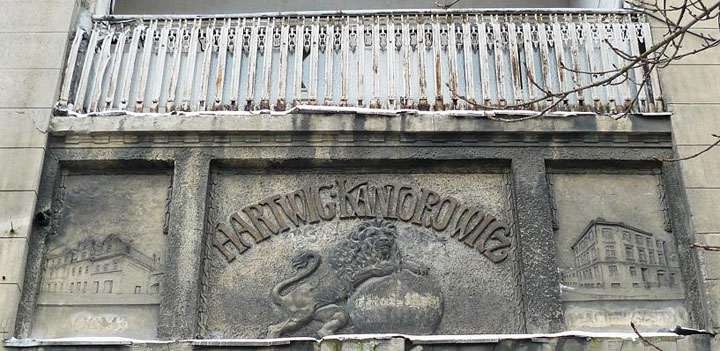
A comprehensive description of the Company was published in the press in 1895. It was stated there that even before the death of Hartwig Kantorowicz in 1871 the enterprise was managed and successfully developed by three of his sons Max, Edmund and Joseph. The inscription above the entrance to the company stated: “All single-handed” (Alles durch eigene Kraft). The company’s products included a varied assortment. Pure alcohol was poured up to four distillation appliances (with a capacity of 1710, 600, 150 and 25 liters), driven by steam. There, the spirit was mixed with the appropriate spices. In a separate laboratory a special process was implemented to protect various 22 liquors produced by the plant: among others Coca-Bitter, exported to Southeast Asia, or Podbipienta, successful not only among Polish consumers. On the green color liquor bottle there was a label with the figure of Polish knight. In the basement of the company there were currently over 100 thousand liters of liquor destined for domestic consumption only. The packing section employed 30 people, mostly women, and tax officials checked the packing of the liquor boxes, which were immediately sealed (after checking alcohol content). Shipments to foreign countries went to France, Denmark , South-West Africa, Central America, Brazil and Japan. Business correspondence was registered in huge ledgers and correspondence, which in the years 1823-1833 was located only in the box, now occupied a high counting-racks on the walls.
Bottles of various shapes were purchased from various glass factories: Silesian, Saxon and Czech. At segregation and shipping of bottles 20 people were employed. Mercantile affairs were dealt with by 15 officials, including three stenographers. The factory was also equipped with cherries extrusion machine, considered the best in Europe.
The Press at once crushed 80 centners of fruit (there were two hydraulic presses and one small). Every day, about a thousand centners of cherries was crushed. In addition, the company had a carpentry workshop and employed several carpenters, as well as its own wax seals plant (for sealing boxes.) In 1907 the company – because of the cramped Wroniecka premisses – moved to a new building at the then suburb: Grochowe Laki Str. No 6,. In the same year the business was converted into a Family Company whose head was, already mentioned, Dr. Franz Kantorowicz. It should be noted that the development and modernization of the company included the introduction of social facilities for workers and officials. The condition of the company was so good that even during the First World War the shareholders were paid up to 12% dividends.
End of the First World War brought a fundamental political change: independent Poland was reborn. Part of the Jewish population in Poznan, linked culturally and linguistically with the Germans left the city in the years 1919-1922. Same was done by the director of Hartwig Kantorowicz company, Dr. Franz Kantorowicz. He was not happy with the political change because of his business interests and even spoke out against the Poles. Therefore, he was interned for a few days in June 1919 by the People’s Guard as a result of complaints of the neighbors. He was released through the intervention of Count. Czarnecki of the Central Command headquarters in Poznan.
He left on August 12, 1920 to Berlin, but soon came back – without official check-in to Poznan. The Company was sold to the Poles, most probably the sale was already earlier prepared.
Dr. Franz Kantorowicz appeared on 5 November 1920, at 20 hours (i.e. after office hours, late in the evening) at the notary Ludwik Zachariasz and sold the company for 20 million marks (5 million for real estate and 15 million for the rights) to the Industrial Bank in Poznan, represented by Dr. Kazimierz Bajonski and Dr. Stanislaw Pernaczyński. It was stipulated in the contract that the prescriptions will be highly confidential. The next day, i.e. 6 November 1920, Dr. Franz Kantorowicz officially left Poznan, traveling to Berlin. According to the official tax, conducted in April 1919 by Petzold and Cybichowski experts, the company had a value of 1 million 504 thousand. 383 marks. After this change, Dr. Franz Kantorowicz continued operations in Berlin, linking it with the label belonging to a group Schultheiss named CAF Kahlbaum AG. The company however continued to operate under the (slightly changed) name: Hartwig Kantorowicz Successor – SA (from 9 December 1920). The good tradition was continued, as in 1929 at the Universal National Exhibition the company received a gold medal. Since 1930, the company was smartly and professionally managed by the economist Dr. Anthony Skowronski. Still located at Grochowe Laki Str No 6. In 1934, the new company statute was implemented – its purpose was now: operating the liquor and fruit juices factory and acquisition of liquor plants on Polish soil. The participation in other enterprises was also allowed, as well as the acquisition and maintenance of those. The share capital amounted to 1 million 237 thousand. 500 zł and was divided into 12,375 shares, at 100 zł each. The Supervisory Board consisted of five persons from among the shareholders elected by the General Assembly for three years. Chairman of the Board received an annual salary of 1500 zł, and members 50 zł for participating in the meeting. In 1938 the buildings were completely renovated.
In mid-September 1939, after the invasion of German troops in Poznan, the Head of the Civil Board confiscated Hartwig Kantorowicz company and appointed, as it’s manager a Volksdeutsche Hans Gohlke. On 5 October 1939, the management of the company was given to Gauselbstverwaltung and on their behalf the company was managed by Gohlke and Volksdeutscher Stanislaus Wiechec. But he soon died, and Gohlke resigned in May 1941. After them, the company was managed by Baron Ernst von Rosen and Joachim Bindemann as directors. Same function also had Baron Claus von Rosen, who in 1943 was appointed to the army. The company employed in 1941, 116 people (including 97 Poles), and at the end of 1942 – 81 people (including 64 Poles). The factor produced in 1940, 687 thousand 750 liters of liqueurs and spirits, 262 thousand 870 liters of fruit juice and 18 thousand 500 kg of jam, and in 1942 275 thousand liters of liqueurs and vodkas, 207 thousand 550 l of juice and 42 thousand kgs of jam. Mainly the military was catered for. During the war, processing capacity was reduced by 50-60%.
Hartwig Kantorowicz Bitters
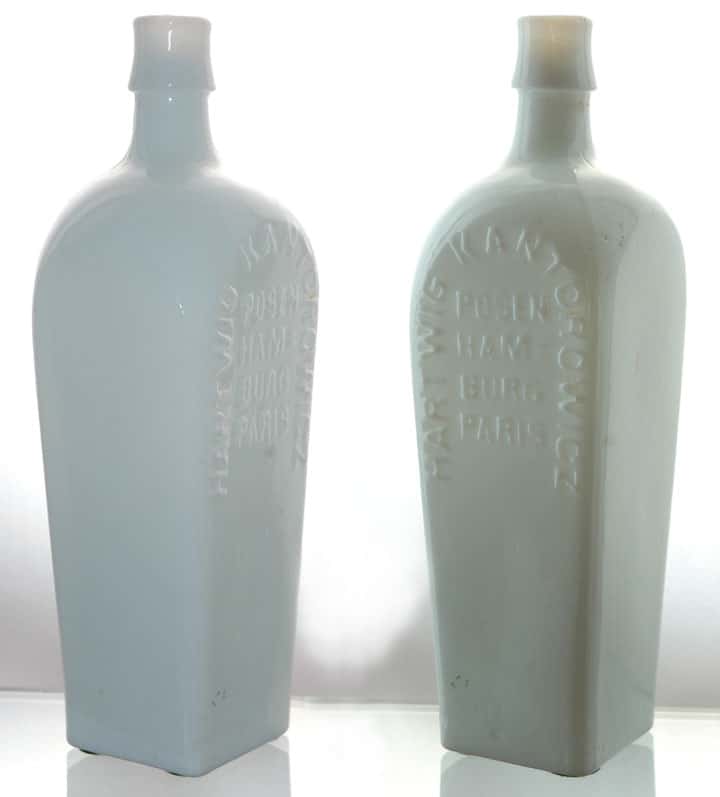
HARTIG KANTOROWICZ / POSEN / HAMBURG / PARIS embossed circle, 9 1/2 x 2 3/8 (6 5/8) square case gin, Milk Glass, LTC, applied top – Meyer Collection
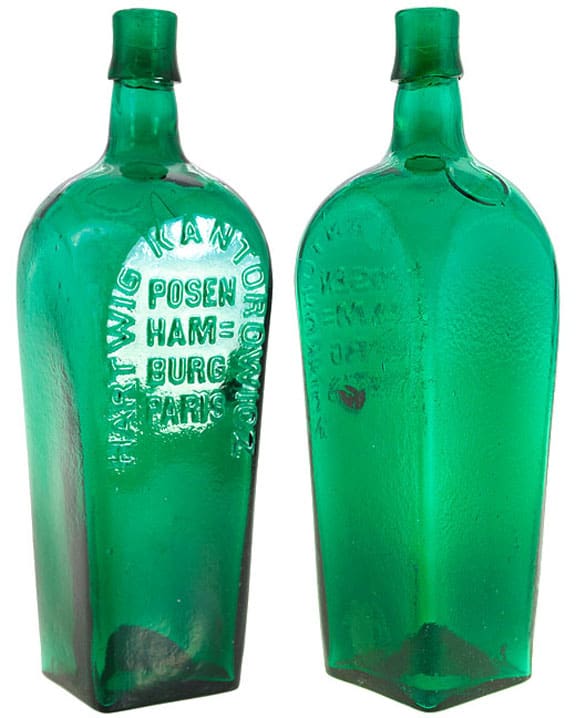
“HARTWIG KANTOROWICZ / POSEN / HAMBURG / PARIS”, (L-106), German, ca. 1875 – 1895, deep teal green case gin form, 9 1/4”h, smooth base, applied mouth, perfect condition. Common in milk glass but extremely rare in this vibrant color! One of only two or three known examples. – Glass Works Auctions
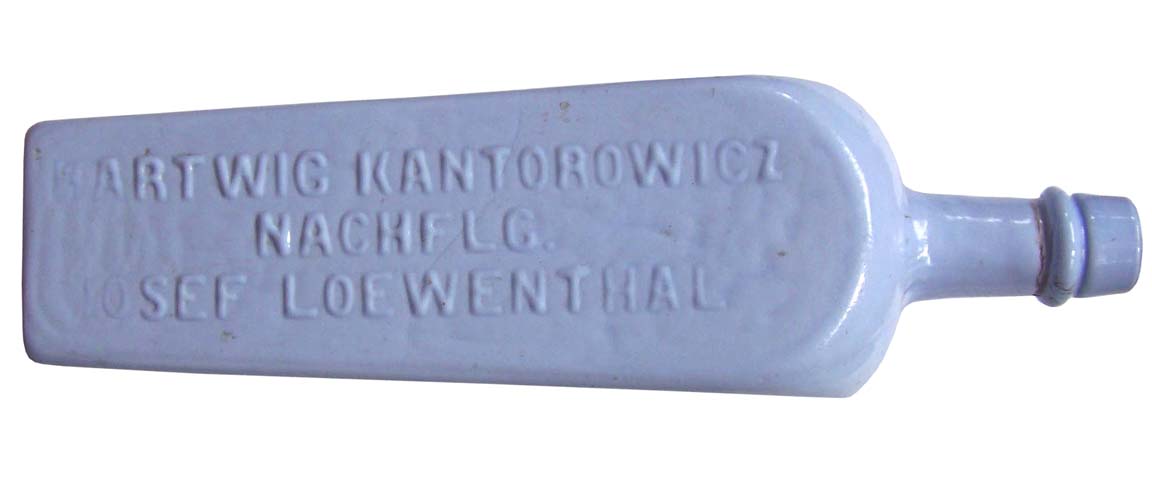
Attached is a pic of one of maybe two of these in this colored bluish milk glass; it is in Australia. – Gary Katzen
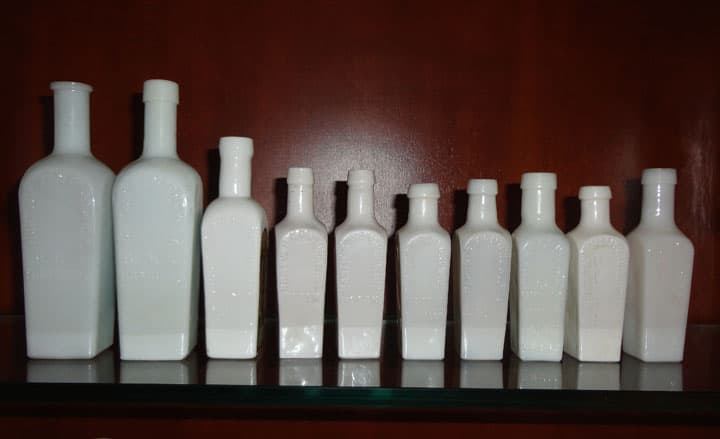
Outstanding run of miniatures of various sizes and shapes – Katzen Collection
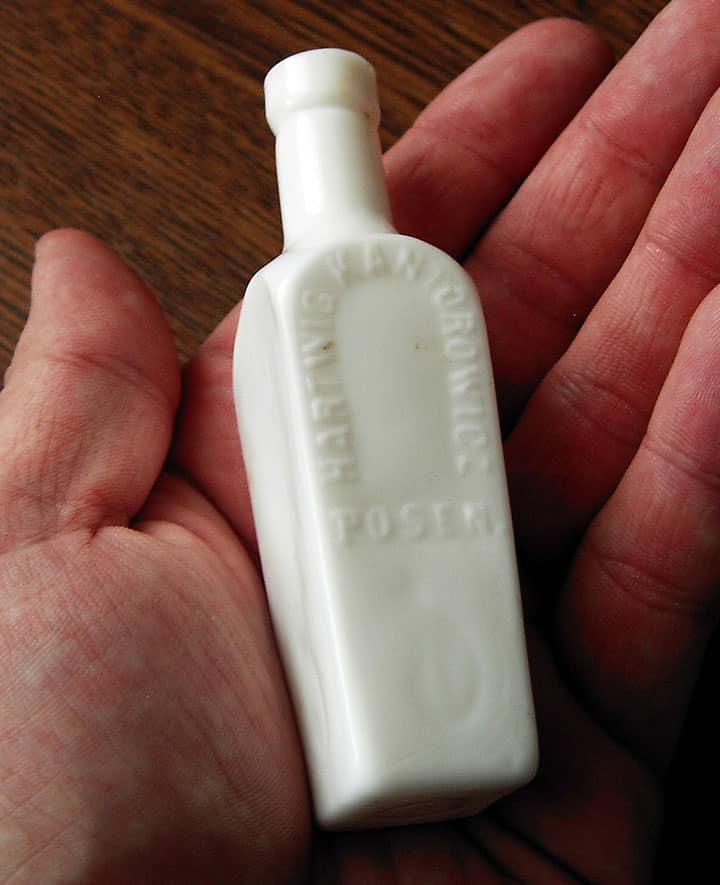
L 107.5 – Miniature Hartwig Kantorowicz Posen
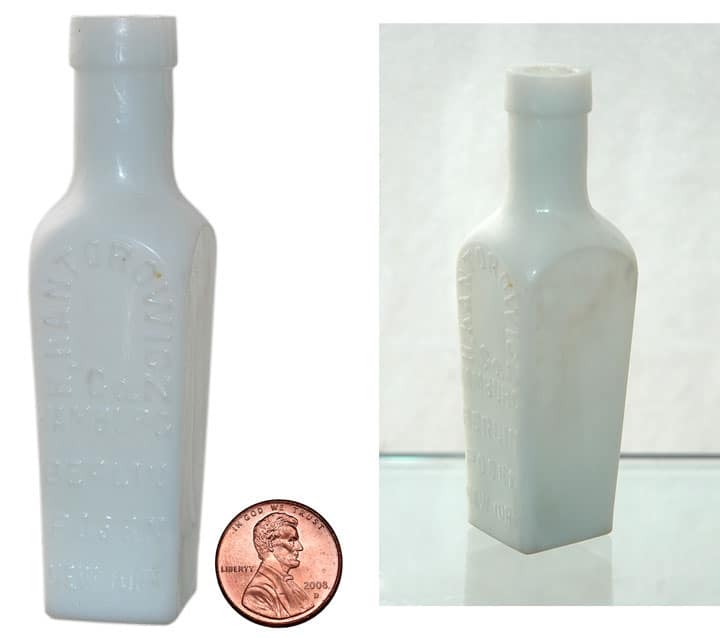
Unlisted H. KANTOROWICZ Co. HAMBURG / BERLIN / POSIN / NEW YORK miniature – Meyer Collection
4 x 2 7/8 Square case gin, Milk Glass, LTC, Unlisted
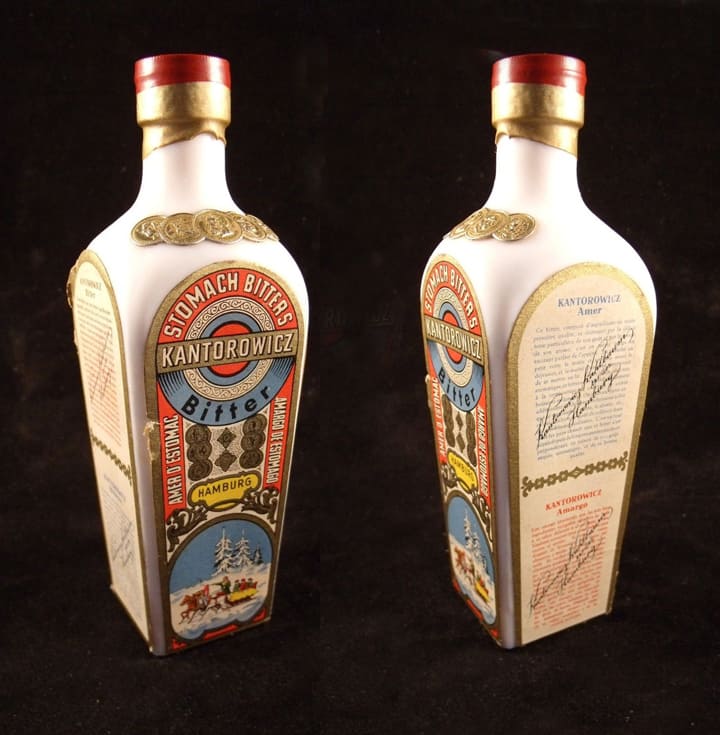
Fully labeled miniature Hartwig Kantorowicz. Un-embossed – ebay
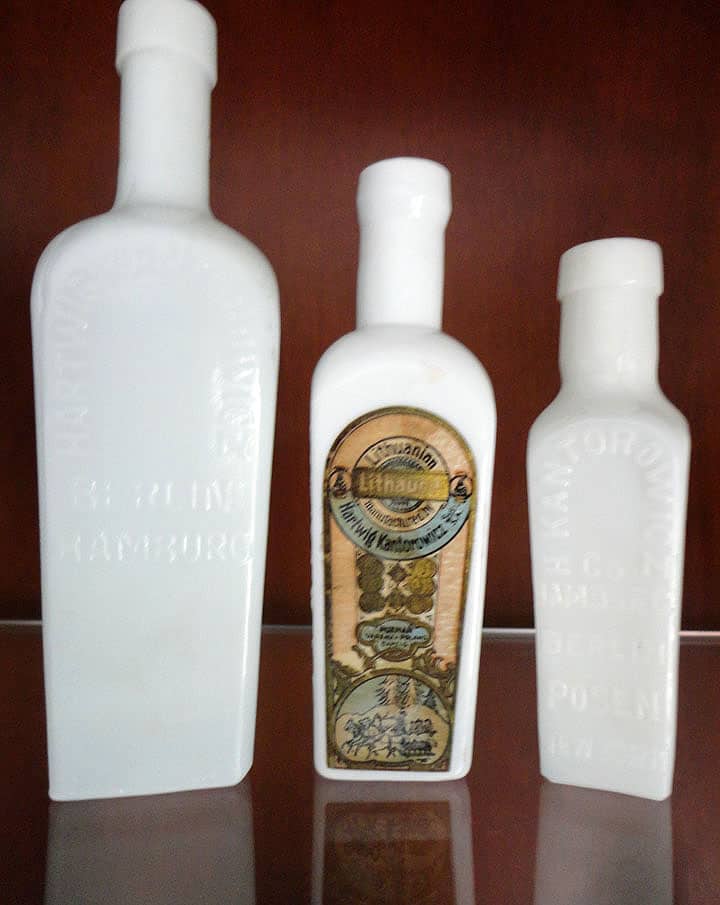
Trio of Hartwig Kantorowicz milk glass bottles. Center bottle with label extremely rare – Katzen Collection
Hartwig Kantorowicz Product Gallery
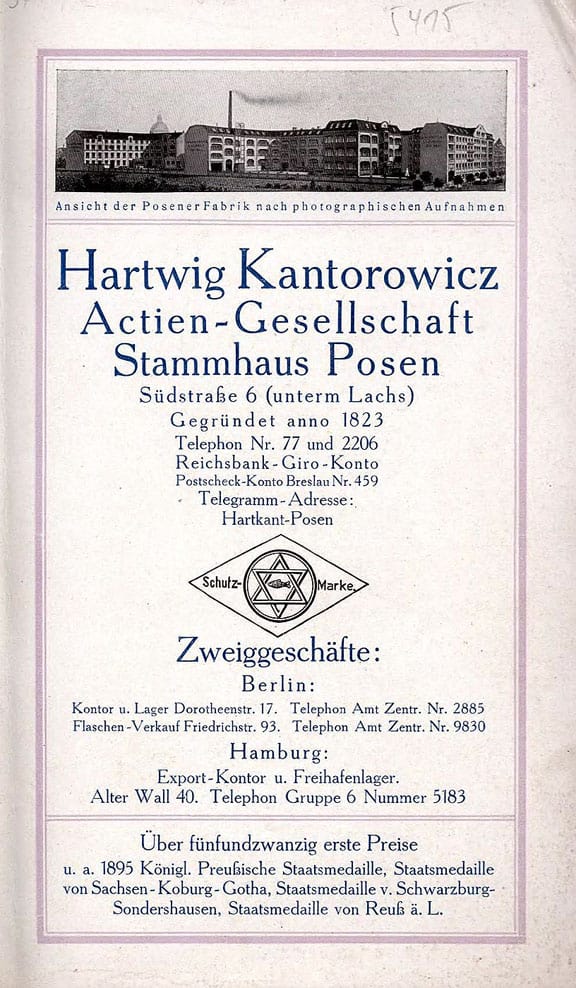
Hartwig Kantorowicz advertising booklet – poznan.wikia.com
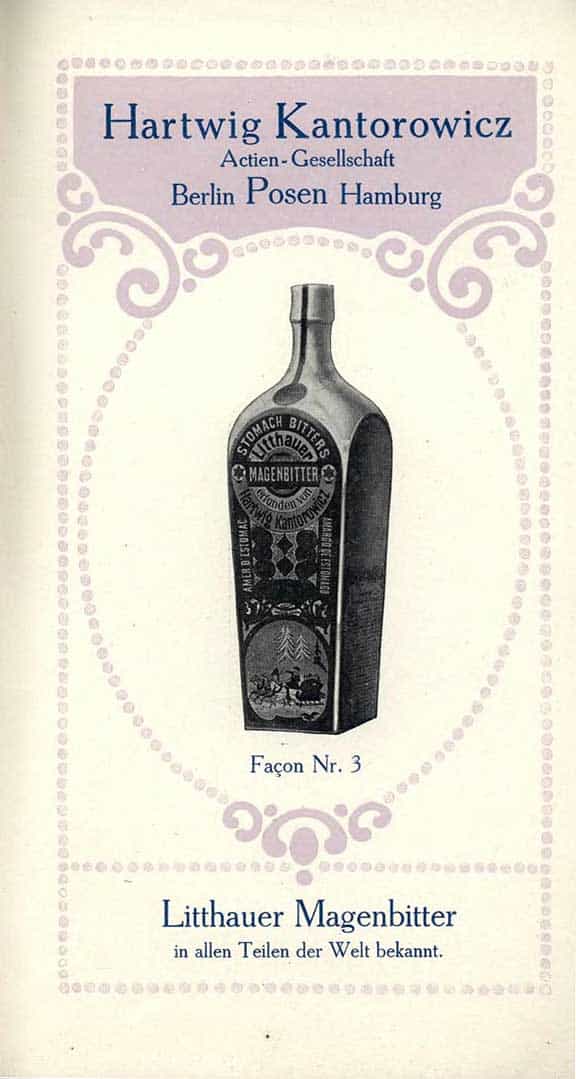
Hartwig Kantorowicz advertising page for Litthauer Magenbitter – poznan.wikia.com
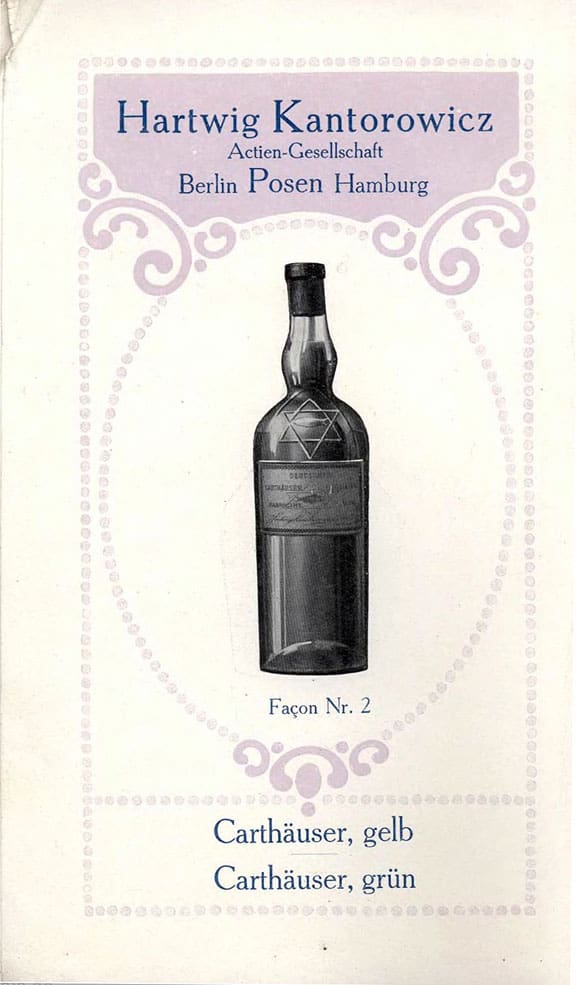
Hartwig Kantorowicz advertising page for Carthauser, gelp and Carthauser, grun – poznan.wikia.com
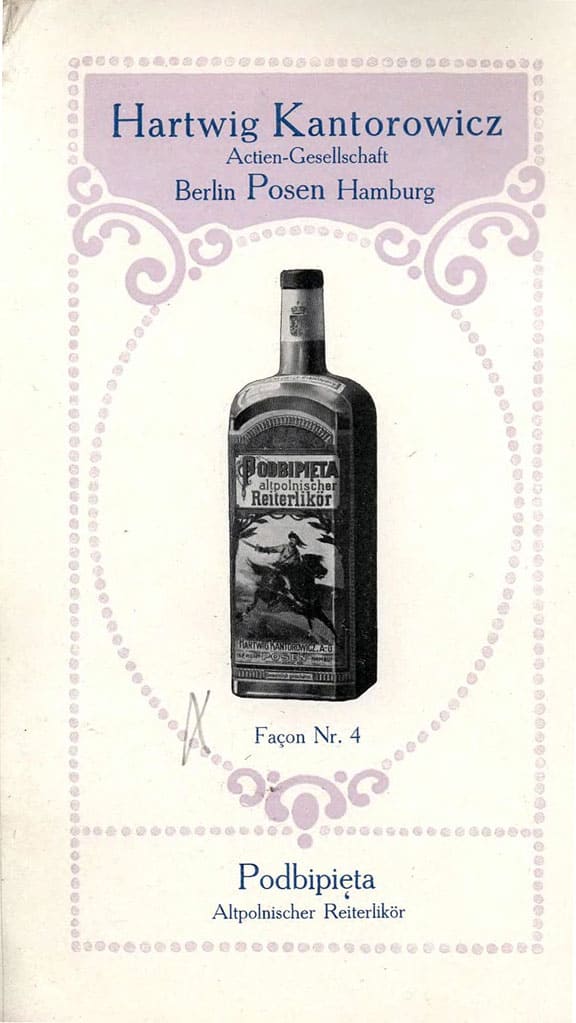
Hartwig Kantorowicz advertising page for Podbipieta – poznan.wikia.com
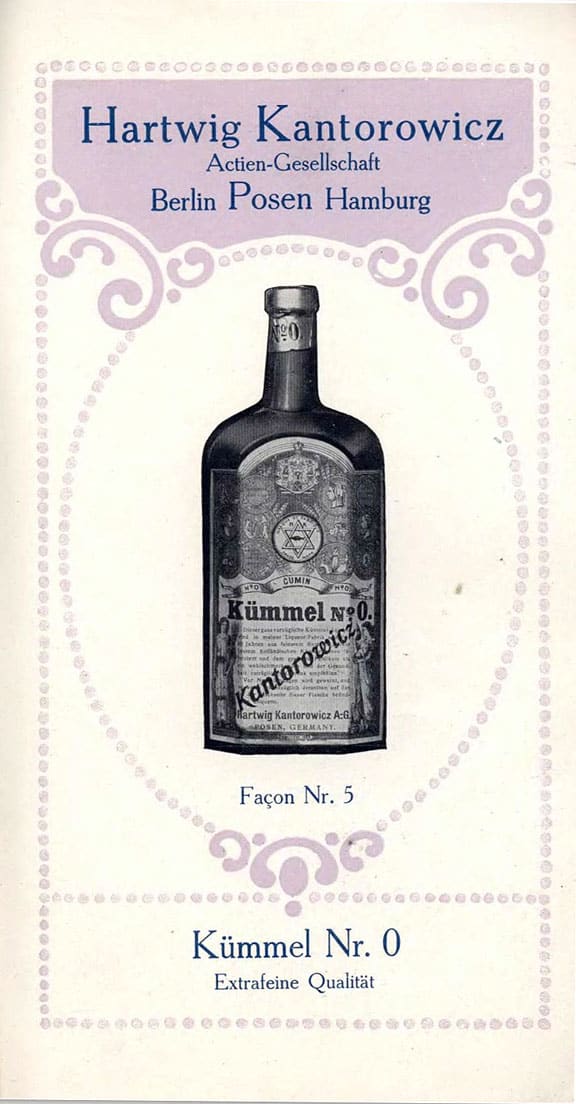
Hartwig Kantorowicz advertising page for Kummel Nr. O – poznan.wikia.com
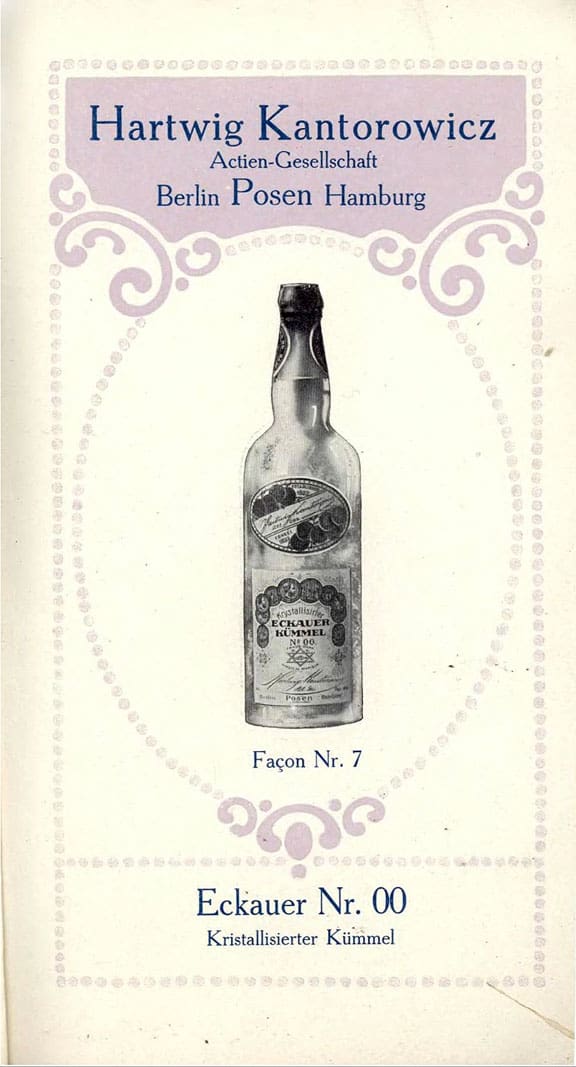
Hartwig Kantorowicz advertising page for Eckauer Nr. OO – poznan.wikia.com
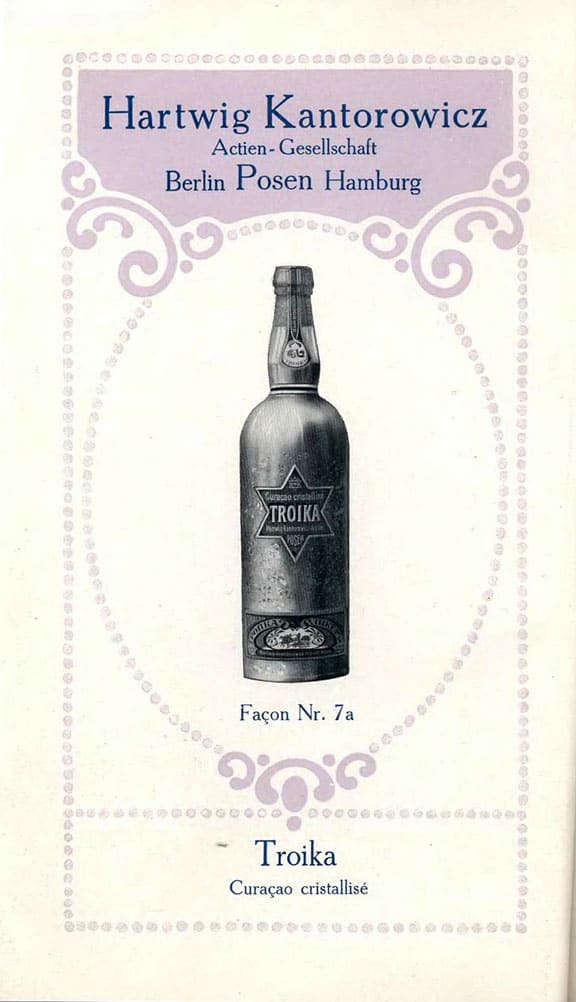
Hartwig Kantorowicz advertising page for Troika – poznan.wikia.com
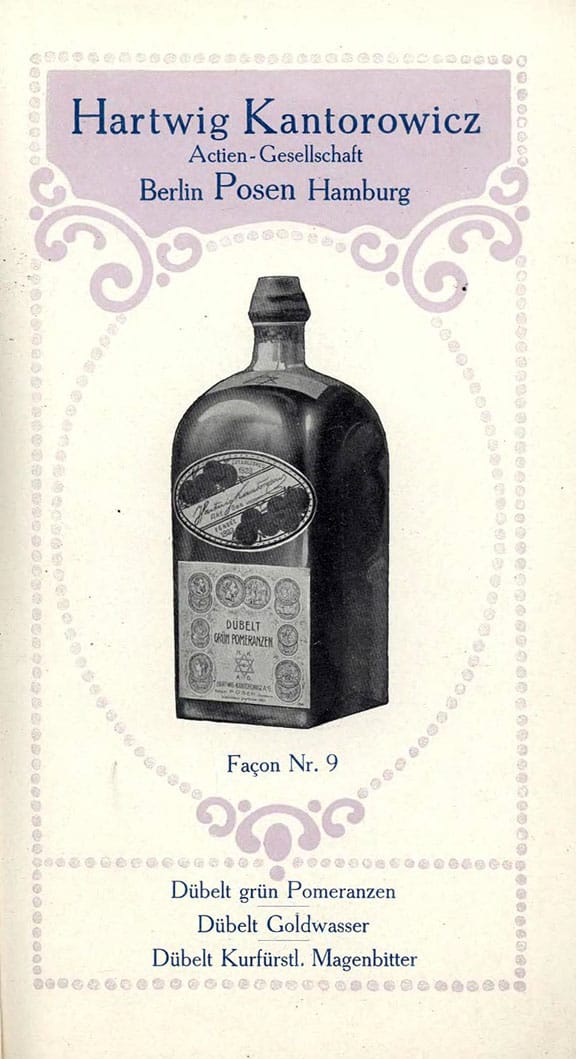
Hartwig Kantorowicz advertising page for Dubelt grun Pomeranzen, Dubelt Goldwasser and Dubelt Kurfurstl. Magenbitter – poznan.wikia.com
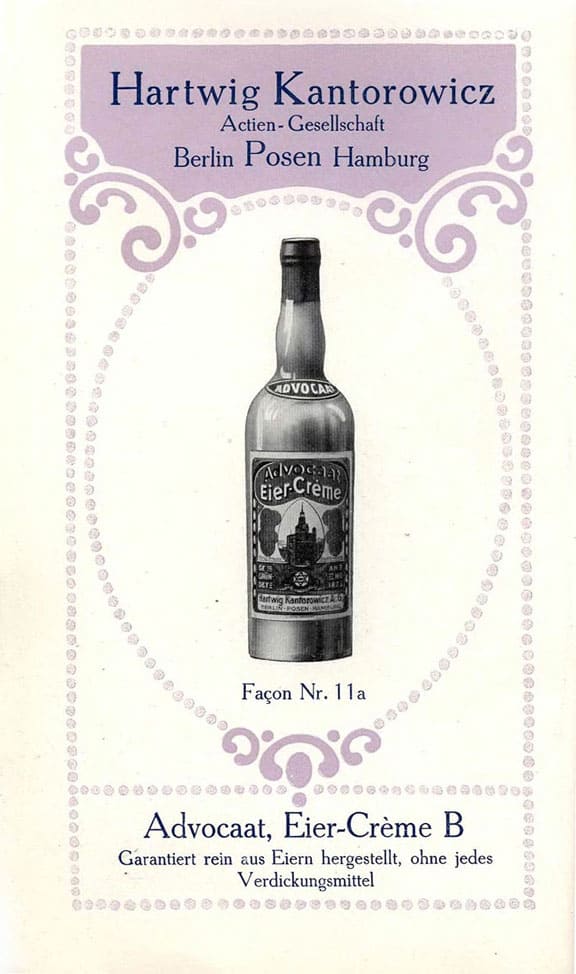
Hartwig Kantorowicz advertising page for Advocaat, Eier-Creme B – poznan.wikia.com
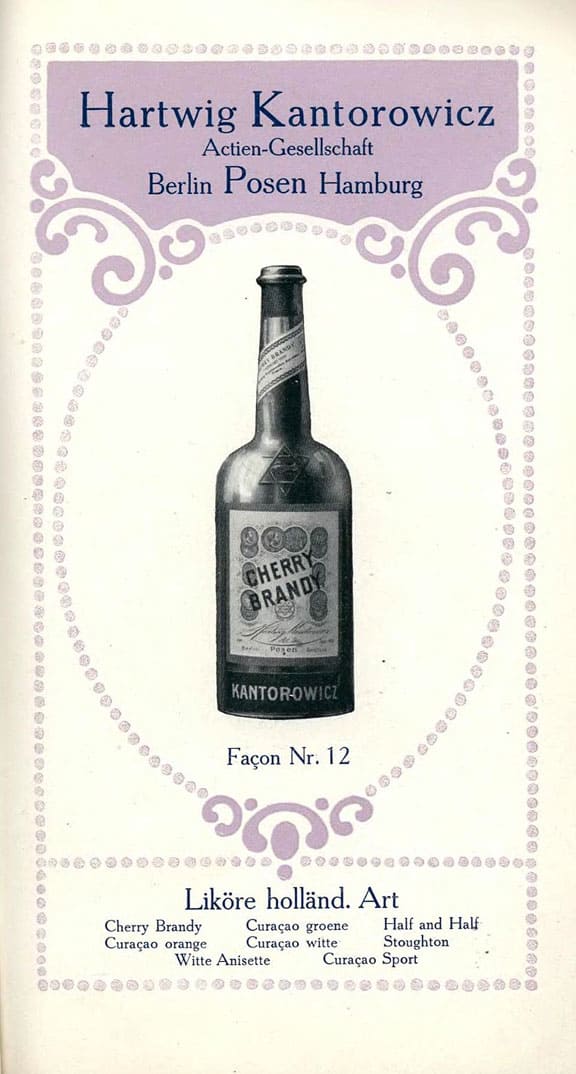
Hartwig Kantorowicz advertising page for Likore Holland. Art – poznan.wikia.com
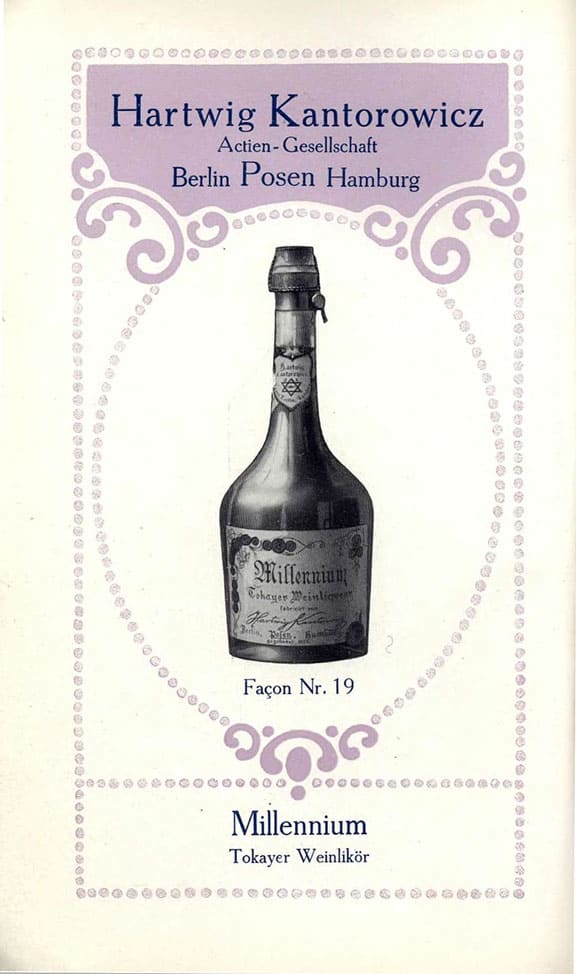
Hartwig Kantorowicz advertising page for Millennium
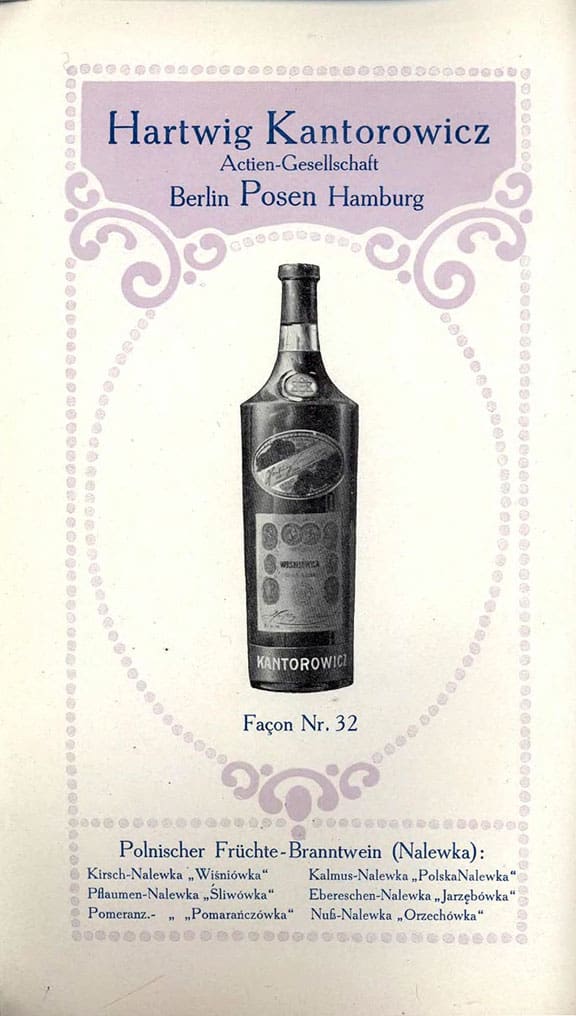
Hartwig Kantorowicz advertising page for Polnischer FRUchte-Branntwein (Nalewka) – poznan.wikia.com
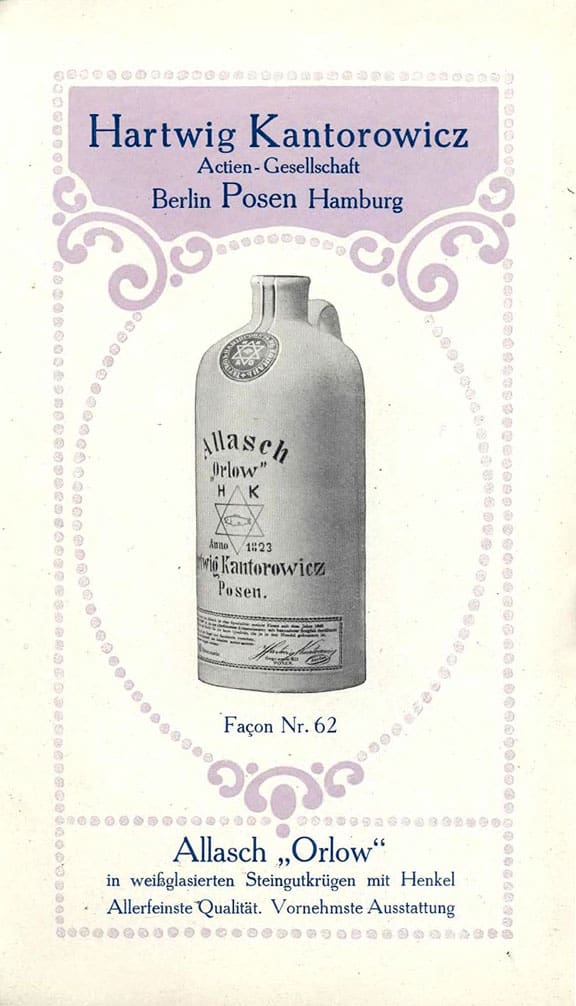
Hartwig Kantorowicz advertising page for Allash ,,Orlow” – poznan.wikia.com
Read More: Germania Herb, Root and Fruit Tonic Bitters and the Germania Magen Stomach Bitters
Read More: Litthauer Stomach Bitters by Josef Lowenthal
Read More: Warren Mortimer Watson and his German Balsam Bitters
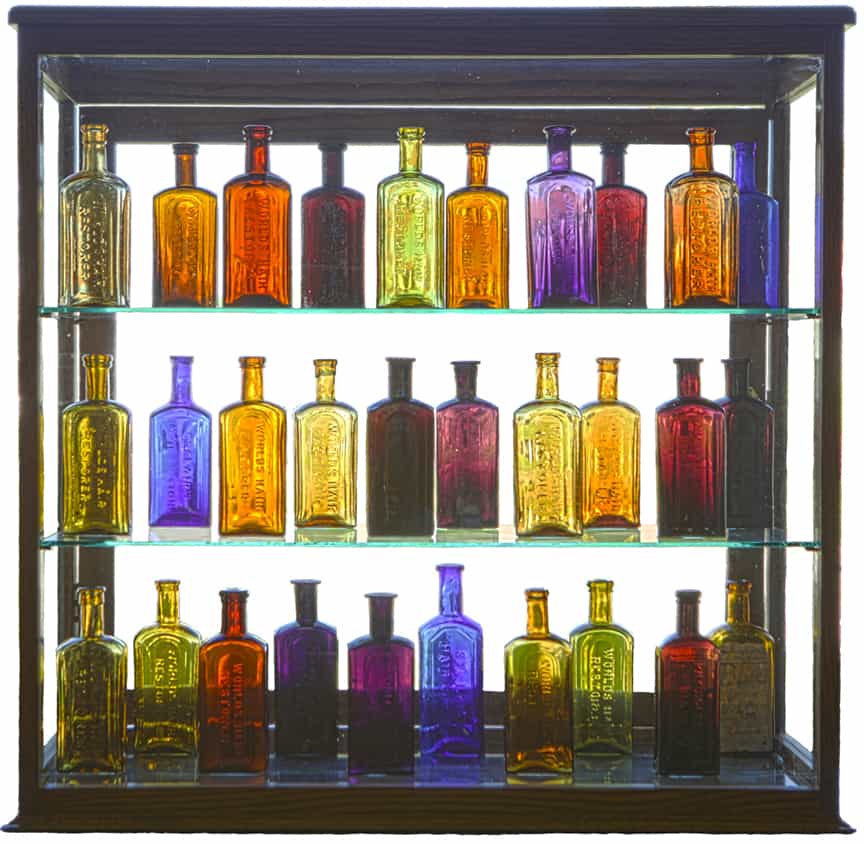 “Just wanted to send a couple of pictures that Scott took of our hair bottles in our new display cabinet. When the sun comes up in the morning, the colors just light up the living room… “ – Pam Selenak
“Just wanted to send a couple of pictures that Scott took of our hair bottles in our new display cabinet. When the sun comes up in the morning, the colors just light up the living room… “ – Pam Selenak![]() He we go with the December 2013 group of pictures culled from a few of the Facebook sites. It looks like the color green is really dominating the collection this month which makes sense. Truly some spectacular pictures.
He we go with the December 2013 group of pictures culled from a few of the Facebook sites. It looks like the color green is really dominating the collection this month which makes sense. Truly some spectacular pictures. Green, open pontiled, teepee, from the same mold as the Harvey sodas from Rhode Island. I got the bottle from a fellow digger. As far as I can tell it is probably unique in this color. – Chris Raezer
Green, open pontiled, teepee, from the same mold as the Harvey sodas from Rhode Island. I got the bottle from a fellow digger. As far as I can tell it is probably unique in this color. – Chris Raezer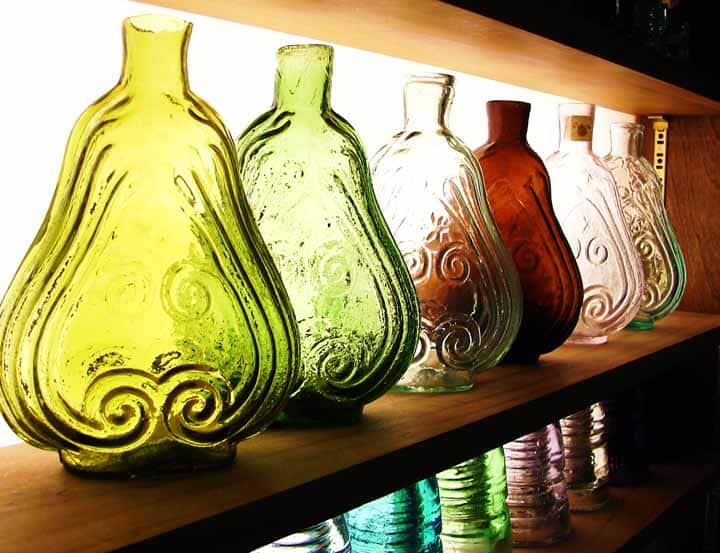 Just wanted to share my new scroll flask and a color run of my pint scrolls. I was just able to add the one on the far left in the citron color. After many months, my friend finally decided to let it go and I was able to acquire it! The color is remarkable and bright, just outstanding. – Cody Zeleny
Just wanted to share my new scroll flask and a color run of my pint scrolls. I was just able to add the one on the far left in the citron color. After many months, my friend finally decided to let it go and I was able to acquire it! The color is remarkable and bright, just outstanding. – Cody Zeleny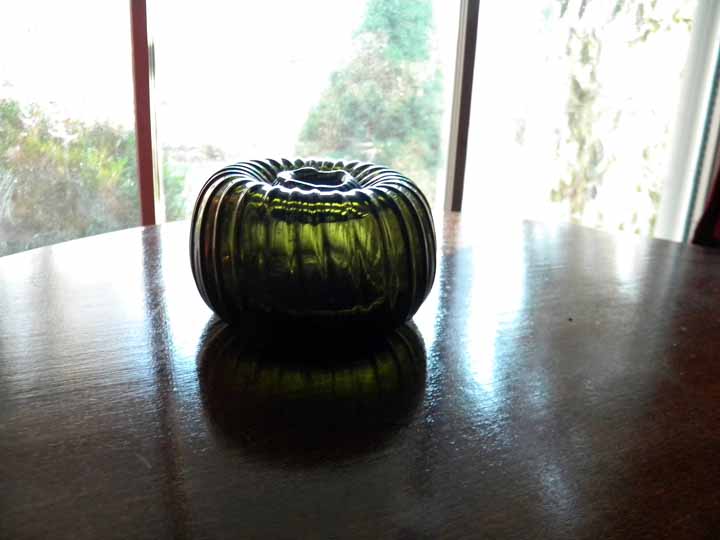 More Pitkin Stuff – Tom Marshall
More Pitkin Stuff – Tom Marshall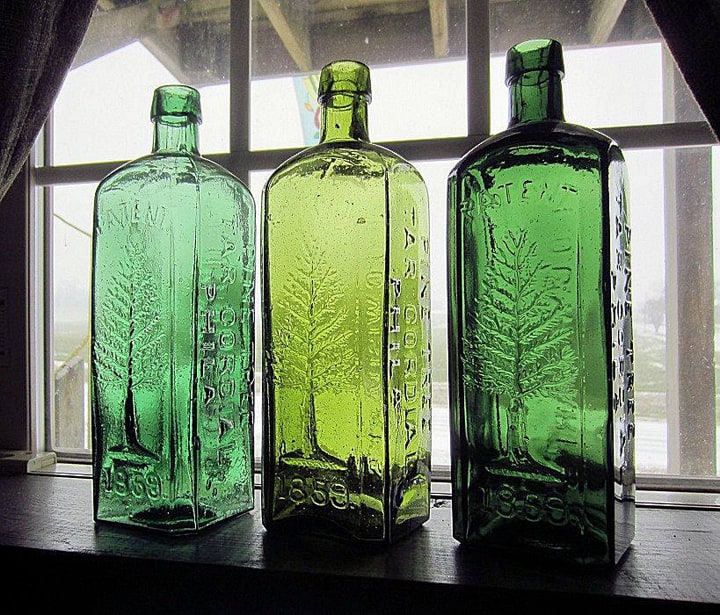 Got our first snow today. I love the ‘Tanker’ LQC Wishart’s full trees against snow. All 3 from the same mold, (3 identical blank side rivets) Union Glass Works, Philadelphia, 1859-1869. My birthplace sentimental trio. – Eric Richter
Got our first snow today. I love the ‘Tanker’ LQC Wishart’s full trees against snow. All 3 from the same mold, (3 identical blank side rivets) Union Glass Works, Philadelphia, 1859-1869. My birthplace sentimental trio. – Eric Richter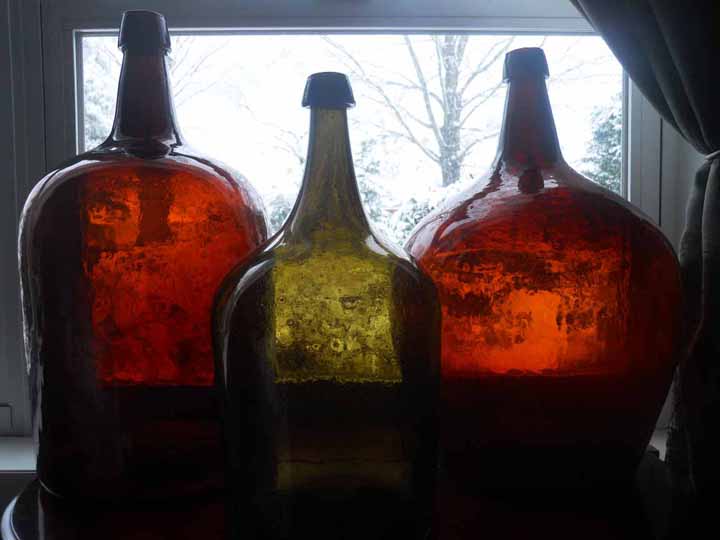 Snowstorm demijohns! – Gene Ainsworth
Snowstorm demijohns! – Gene Ainsworth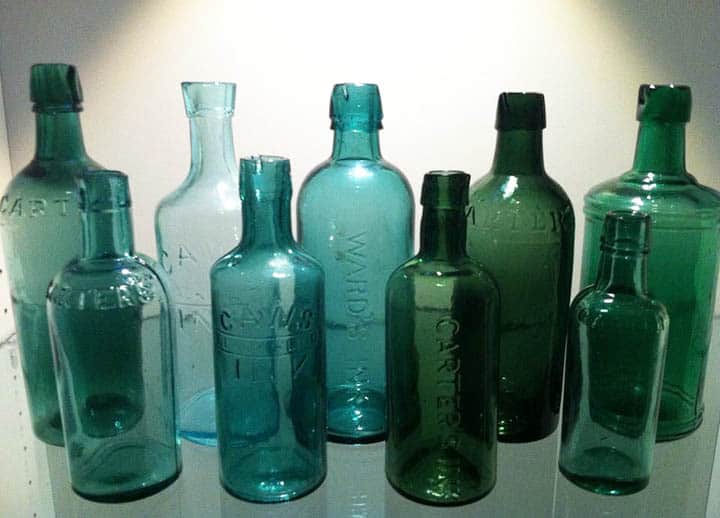 Grouping of some greens – Jerry Moffitt
Grouping of some greens – Jerry Moffitt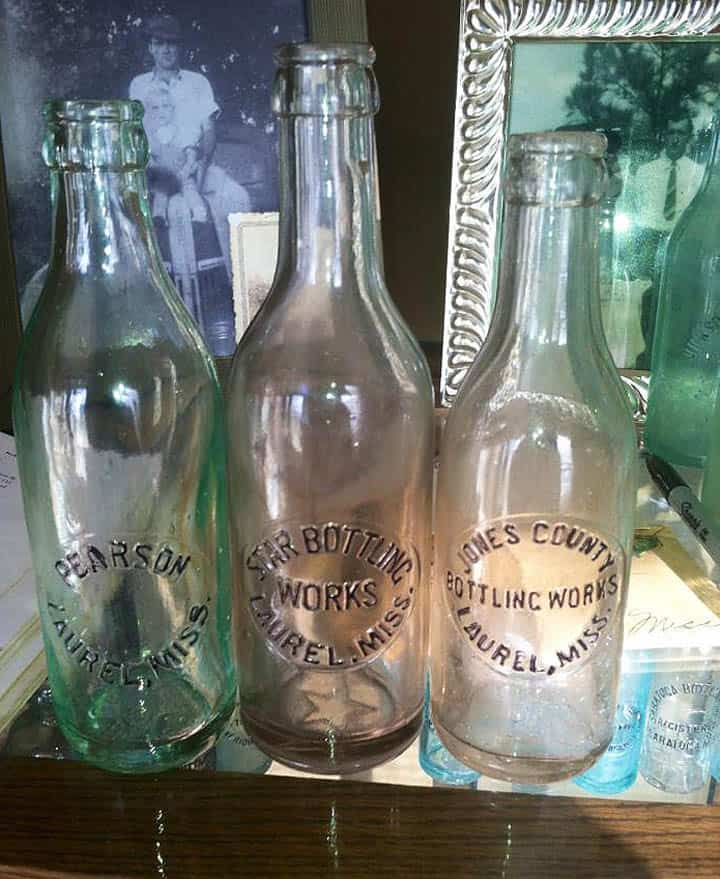 My Laurel’s (Mississippi) – Jeramy Little
My Laurel’s (Mississippi) – Jeramy Little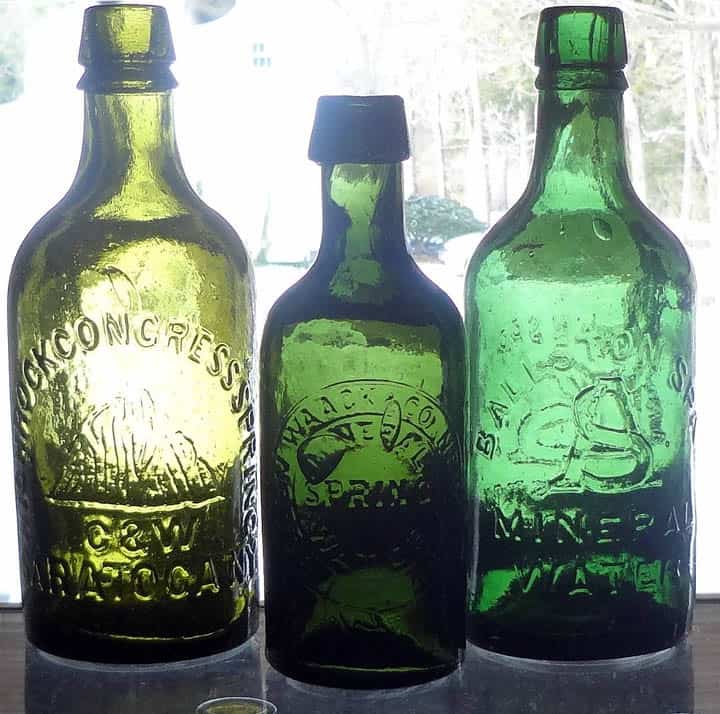 Mineral Waters – Charles Flint
Mineral Waters – Charles Flint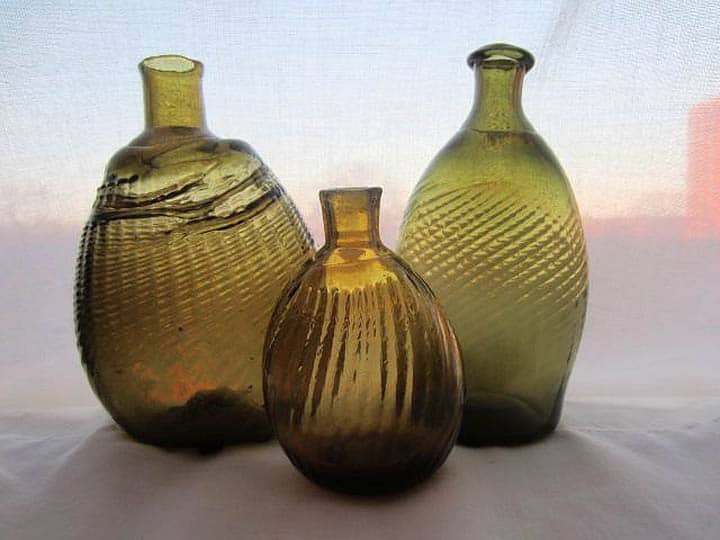 These Pitkins are different – see the wild swirling on the flask on the left, the formed lip on the right, and the tiny size and coloration in the middle. – Dana Charlton-Zarro
These Pitkins are different – see the wild swirling on the flask on the left, the formed lip on the right, and the tiny size and coloration in the middle. – Dana Charlton-Zarro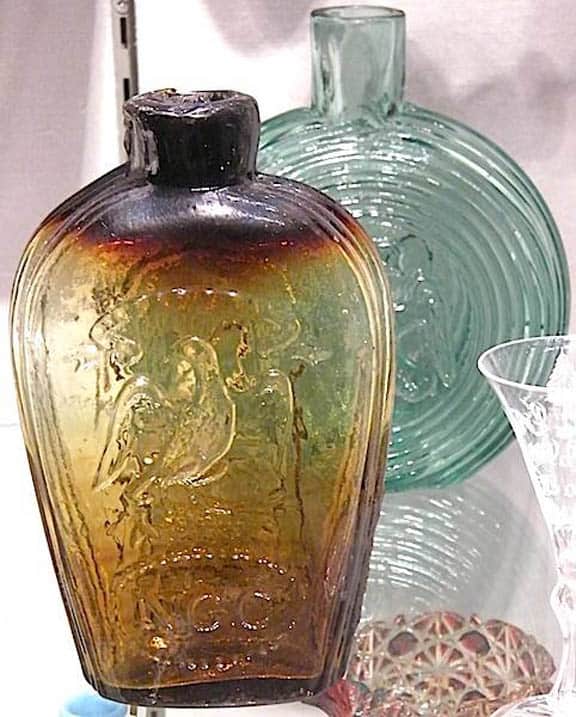 Just posting some Corning gems we all would want in our Christmas 2014 stockings. – Noel Tomas
Just posting some Corning gems we all would want in our Christmas 2014 stockings. – Noel Tomas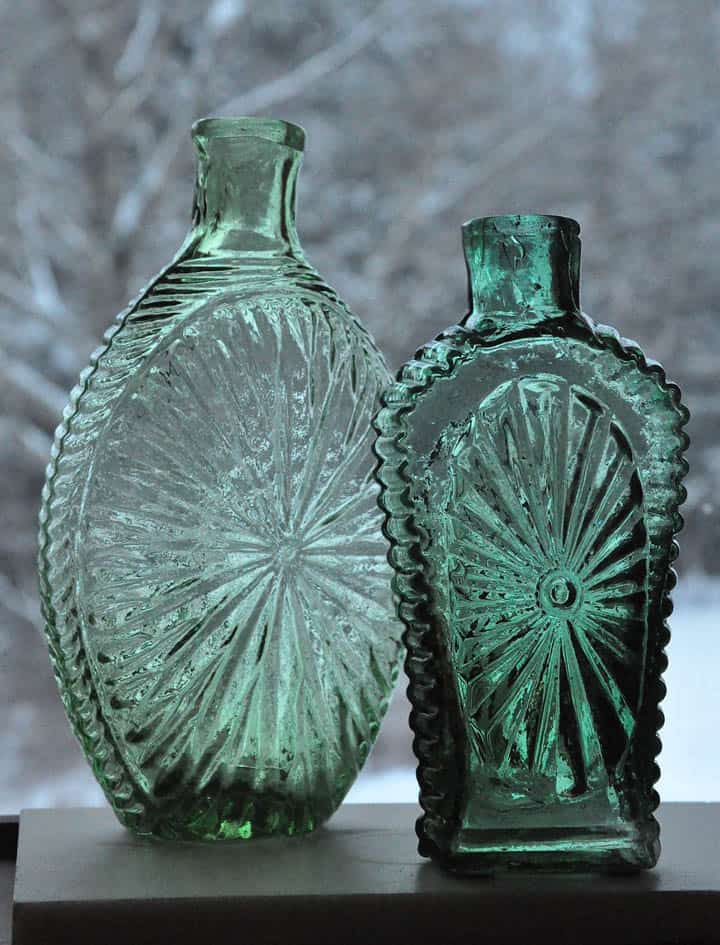 Merry Christmas to all the Antique Bottle Collectors, and a great New Year ahead! – Mike Brauser
Merry Christmas to all the Antique Bottle Collectors, and a great New Year ahead! – Mike Brauser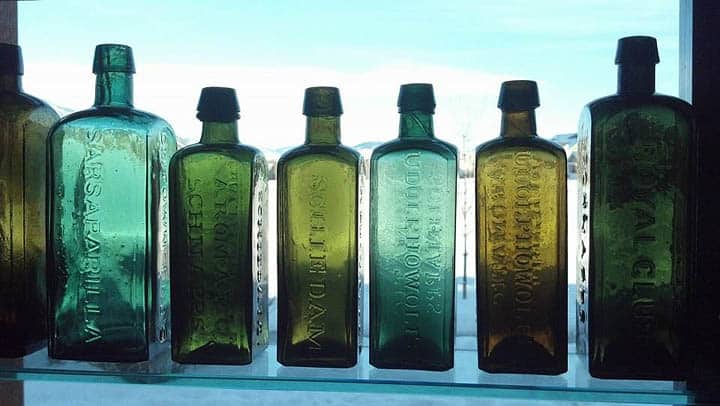 More greenies….. – James Campiglia
More greenies….. – James Campiglia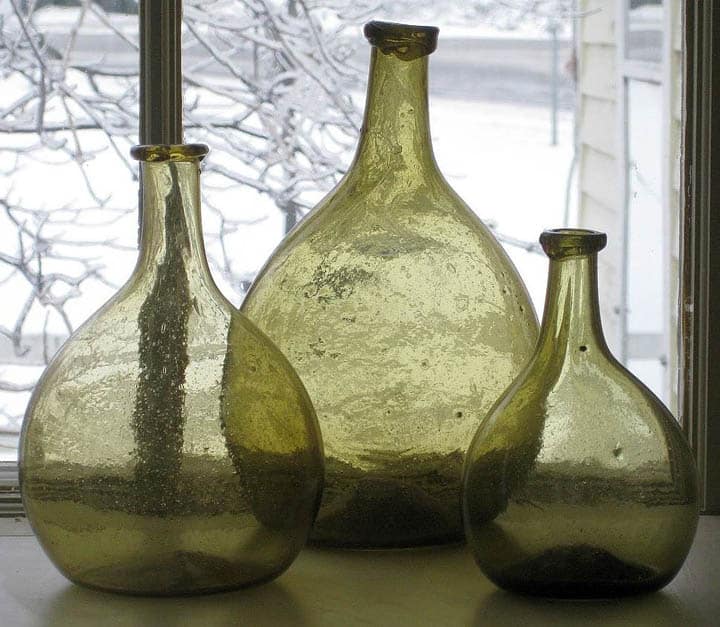 Three yellow chestnuts, sitting in a tree…. – Jeff Noordsy
Three yellow chestnuts, sitting in a tree…. – Jeff Noordsy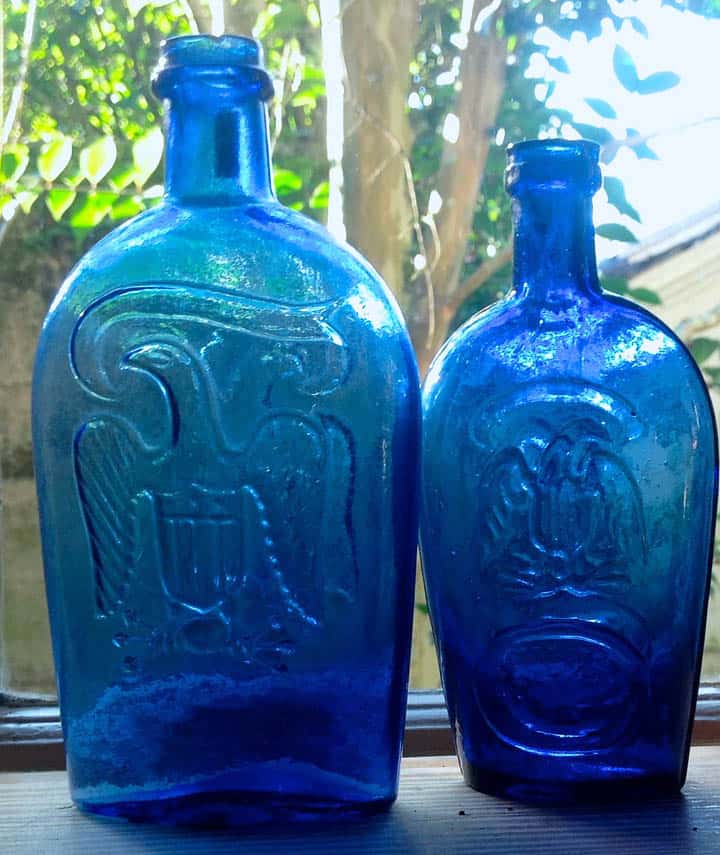 G II 118 pint & G II 109 half pint – Charles Aprill
G II 118 pint & G II 109 half pint – Charles Aprill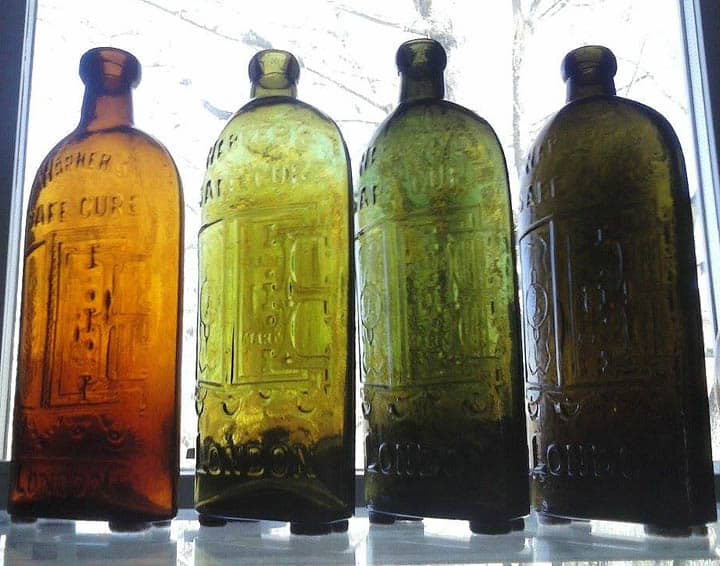 Just a few shots of the collection of mainly Warner’s Safe – Aaron Hanshew
Just a few shots of the collection of mainly Warner’s Safe – Aaron Hanshew
